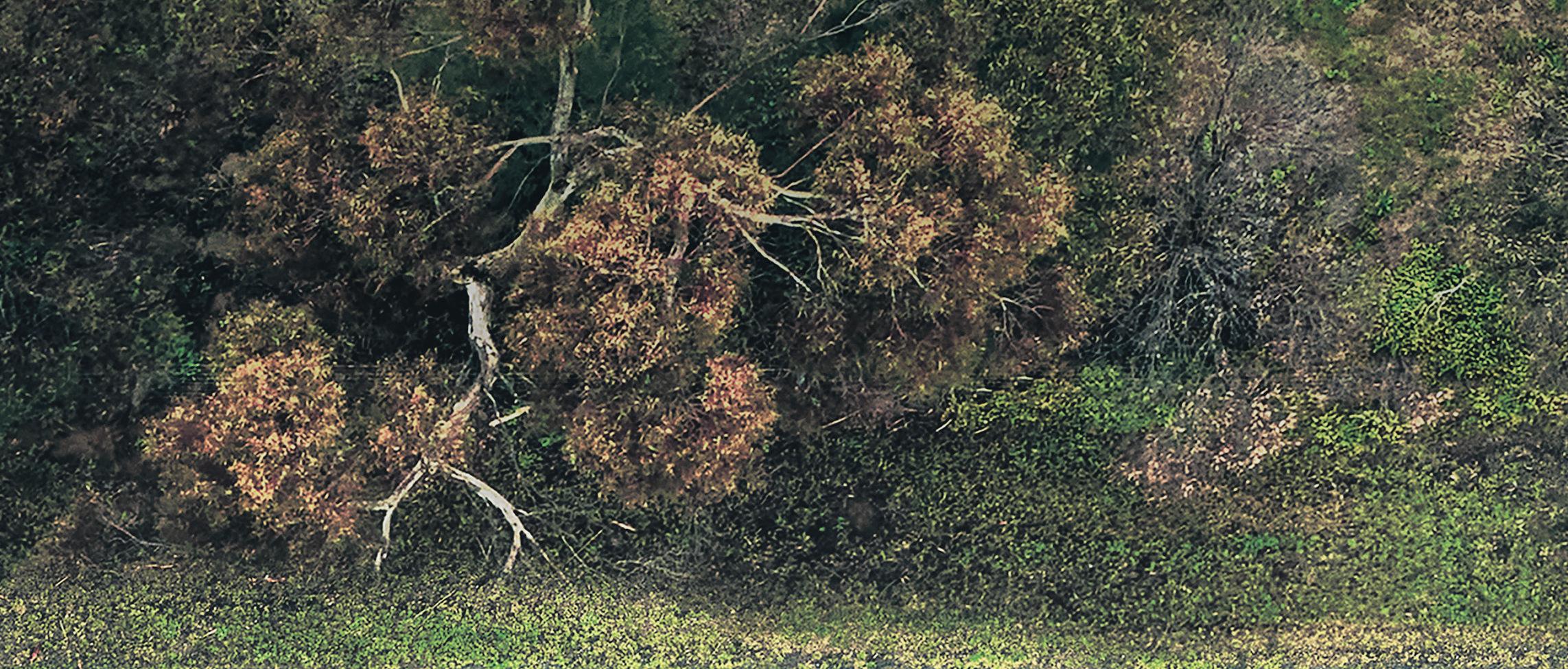

Local Legends Unite: Strathbogie Shire Celebrates Volunteer Spirit
In a wonderful showcase of community spirit, more than 100 volunteers from across the shire gathered at Discovery Parks Nagambie on Wednesday, May 21, to mark National Volunteer Week, this year’s theme being “Connecting Communities.” The event brought together dedicated locals who selflessly give their time and energy to make a difference across the Strathbogie Shire.
Strathbogie Shire Mayor Cr Claire Ewart-Kennedy warmly welcomed everyone to the gathering and highlighted a significant moment of the day, the announcement of this year's Local Legends Awards recipients. A standout feature of the event, the coveted Strathbogie Shire Local Legend award, which celebrates individuals who have made remarkable voluntary contributions to our community. The 2025 honours were bestowed upon two exceptional local heroes, Maureen (Mozzi) Fowler and David Carson.
Mozzi’s dedication to the community shines through her extensive involvement with Nagambie Healthcare, the Nagambie Tennis Club, and the Nagambie Lakers Football Netball Club, among others. With more than 20 years of service at Nagambie Healthcare and as a life member of both the tennis and football/netball clubs, she has truly left an indelible mark. Her nominator enthusiastically declared, “Maureen is AMAZING,” and it’s hard to dispute this sentiment given her outstanding legacy of service.
David Carson was similarly honoured with the Local Legend award for his unwavering commitment to the Longwood Football Netball Club. Together with his partner, Sheridan, David took the initiative to launch the club’s inaugural U/10's football team. He dedicated countless hours to recruiting young players, engaging them in schools, and providing essential transport for them to participate in games. His nominator noted, “The growth in our junior numbers has made the Redlegs an even more enjoyable club to be a part of,” underscoring the invaluable role David plays in nurturing local talent.
The celebration was a beautiful reminder of the power of volunteering and how contributions from individuals like Mozzi and David weave the fabric of our community. As locals connected and shared stories throughout the day, it was clear that the dedication of our volunteers is what truly makes the Strathbogie Shire a great place to live.
Participants enjoyed a delicious lunch prepared by the A3 catering team while taking in heartfelt talks from an inspiring leader, the incredible Sarah Barnbrook, whose words especially resonated with the crowd. Sarah’s personal journey highlighted the profound connection between volunteering, community inclusion, and personal growth.
Having lived in Australia for over a decade, Sarah shared her experience of how, despite her long stay, she still often felt like an outsider due to the cultural differences she encountered. It was through volunteering, however, that she found the bridge to a sense of belonging.
“Volunteering allowed me to connect with others, to understand my community, and most importantly, to find my place in it,” Sarah said. “It was through volunteering that I was able to see beyond my own sense of isolation and really become part of something greater.” Her story resonated deeply with the audience, many of whom had faced their own challenges with belonging. Sarah emphasised that while volunteering helped her feel more integrated, it also provided personal growth and helped balance her responsibilities in a way that was both fulfilling and meaningful.
Throughout her address, Sarah emphasised the importance of faceto-face connections in the volunteer sphere, noting how in-person engagement with others was not only a means of support but also a powerful way to impact lives.
“Sometimes, just being present is enough to make a difference,” she said. “Volunteering isn’t just about doing tasks – it’s about showing up for others and being there when it matters most.”
The speaker also delved into the topic of digital safety, sharing her own struggles with the overwhelming digital landscape and the risks of online exploitation. Advocating for a "safe by design" approach to technology, Sarah stressed the importance of protecting vulnerable communities from digital harm. “As we continue to rely more on digital platforms, we must remember the people behind the screens. Technology should be used for good, not as a tool for exploitation.”
Sarah's address took an emotional turn as she reflected on a visit to the Red Cross Museum in Geneva, where she witnessed the haunting art created by prisoners of war in camps.
“The resilience and hope that came through in their artwork left me overwhelmed. These prisoners found a way to hold onto their humanity in the darkest of times, and that was only possible because volunteers and organisations came together to support them,” she said, emphasising the profound role volunteers play in preserving hope during difficult times.
The themes of resilience and support continued as Sarah reminded the volunteers in the room that while they carry light for others, they too need support. “Volunteering can be draining, and it’s okay
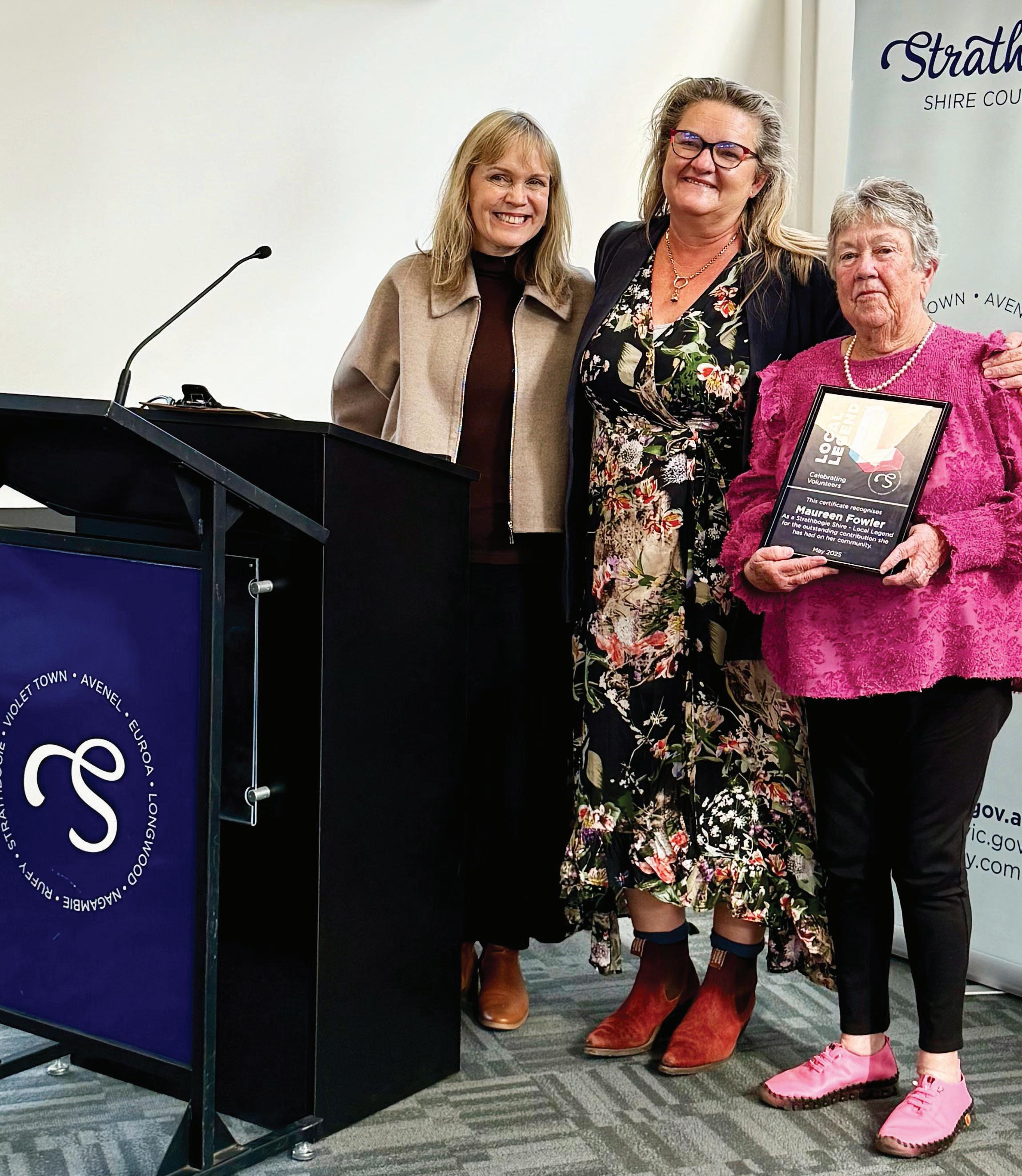
to say no and to seek help. Self-care is just as important as giving,” she encouraged. “We need to look after ourselves so we can continue supporting others.”
Finally, Sarah spoke about the importance of engaging younger generations in volunteering, especially in rural communities. She shared her experience of creating an organisation to address the effects of screen time on children, underlining the significance of getting young people involved in causes that matter.
“Volunteering isn’t just a way to give back – it’s a way to grow and learn alongside your community,” she said.
Sarah’s message was clear, volunteering not only fosters community inclusion but also offers personal growth, resilience, and an opportunity to make a real difference in the world.
The day culminated in a breathtaking cruise aboard the Goulburn Explorer, offering everyone the opportunity to immerse themselves in the stunning scenery along the Goulburn River and Nagambie Lakes, admiring the picturesque riverbank views that define our region. This scenic experience served as a powerful reminder of the beauty of our community and inspired all to continue recognising and celebrating the incredible work of those who uplift and enrich our lives.
This fantastic event was funded by the Community Recovery Hub, which is a partnership between the Australian and Victorian Governments through the Disaster Recovery Funding Arrangements (DRFA).
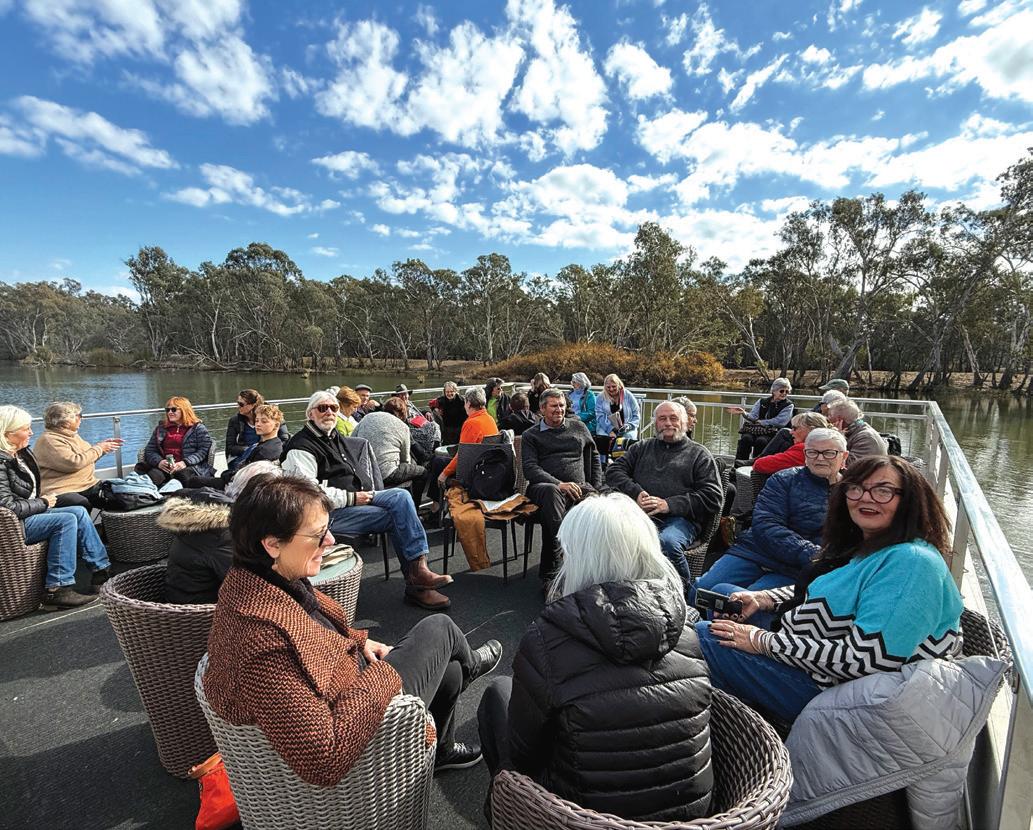
GOULBURN RIVER & RANGES
Image Above - CEO of Strathbogie Shire Council, Rachelle Quattrocchi, Mayor Claire Ewart-Kennedy and Local Legend Mozzi Fowler

The Community Voice is a community newspaper that is published by Go Nagambie every fortnight, and it is available for free. It has an average circulation of 2500 hard copies and can be found at distribution points located in Nagambie, Avenel and Seymour.
You can also access The Community Voice online by visiting www.gonagambie.com.au
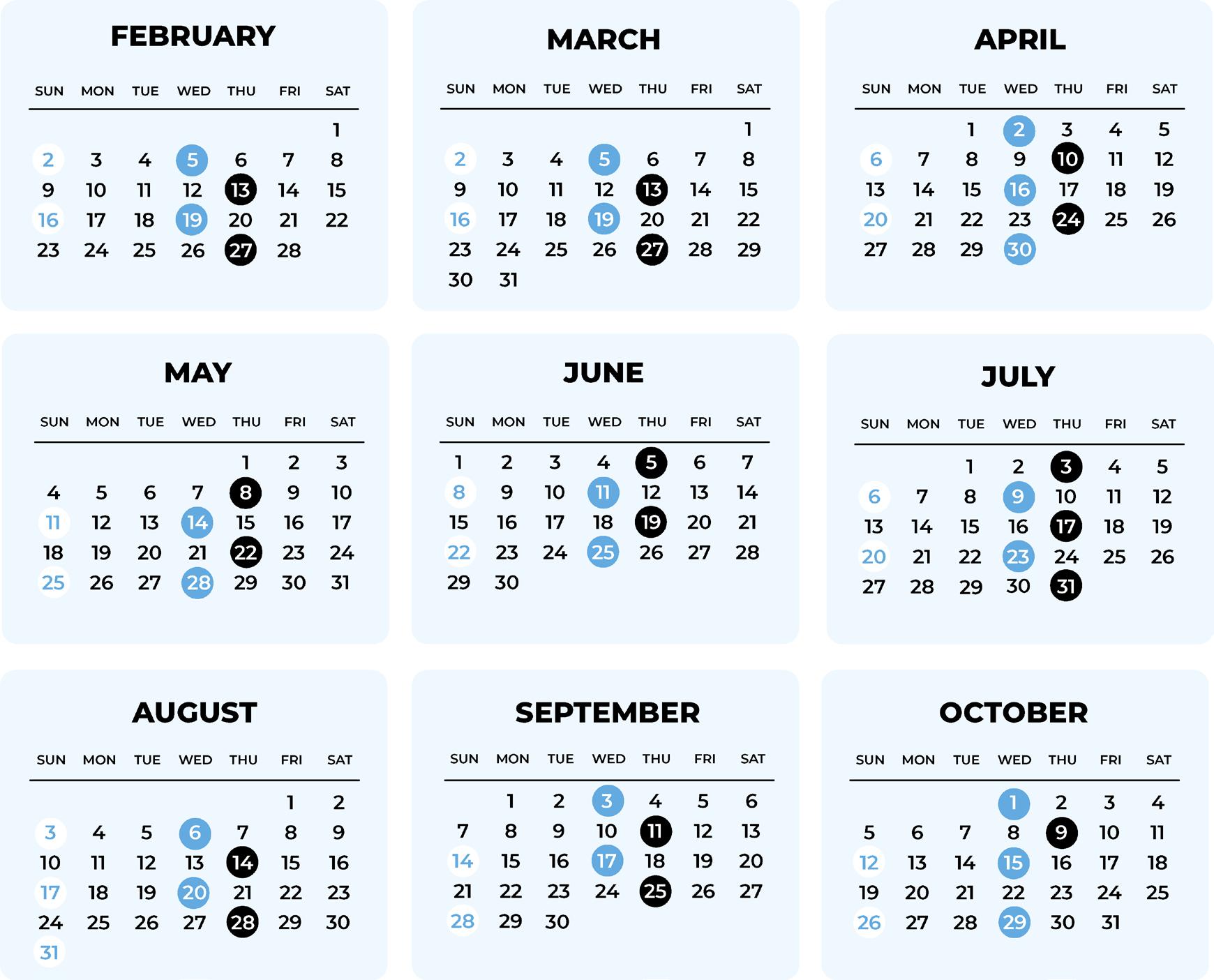
Advertising/News Due Dates

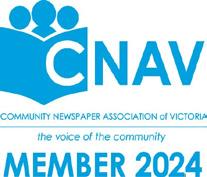
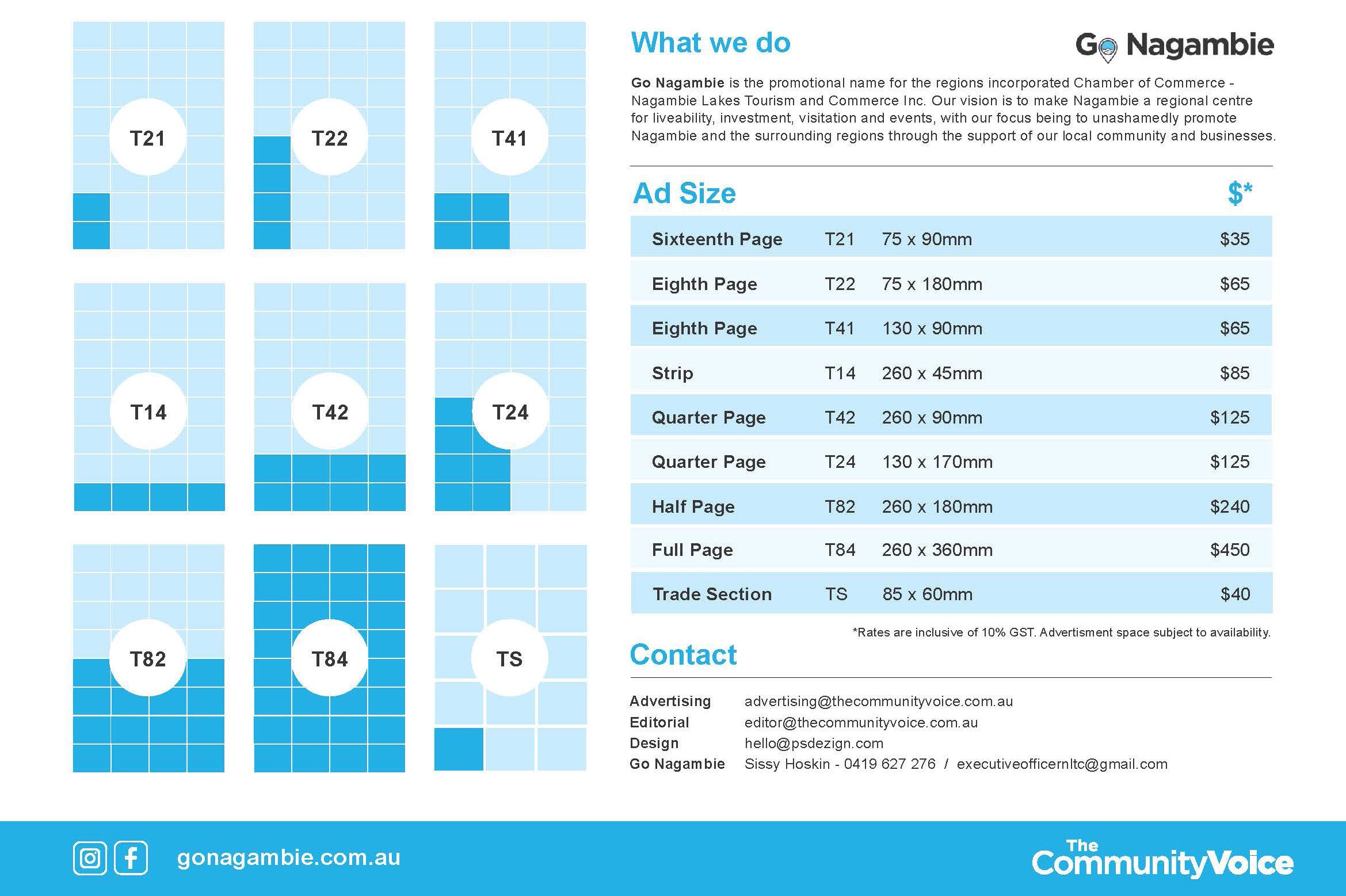
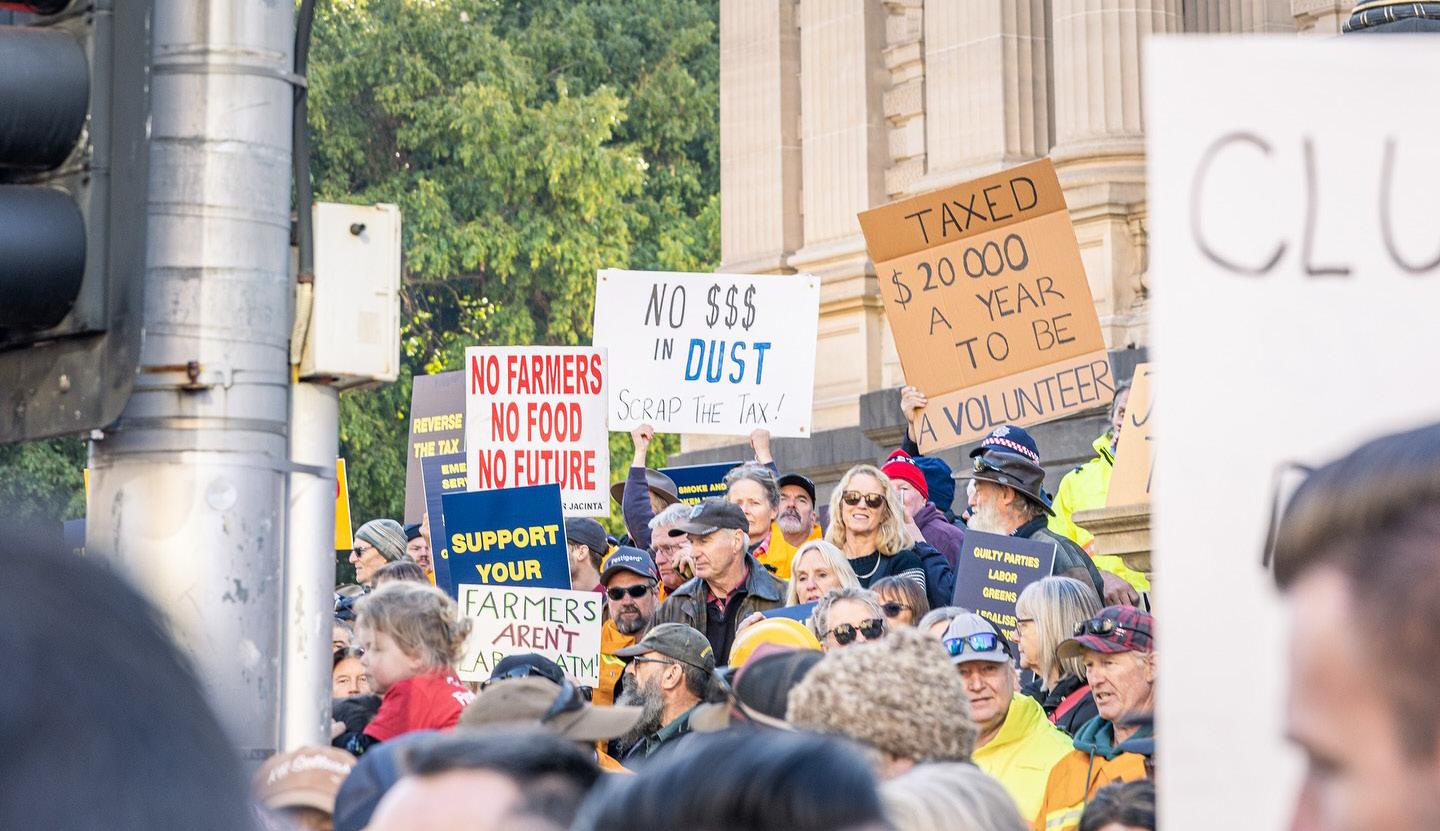
Strathbogie Shire Council Condemns Emergency Services Levy as Unjust Burden on Rural Communities
Strathbogie Shire Council has condemned the Victorian Government’s decision to implement the Emergency Services Volunteer Fund (ESVF), which will replace the Fire Services Property Levy (FSPL) from 1 July 2025. The new levy, collected through council rate notices, will significantly increase costs for many residents — particularly those in rural and agricultural areas. The residential variable rate is set to rise from 8.7 to 17.3 cents per $1,000 of a property’s Capital Improved Value (CIV), while the rate for Primary Production land will leap from 28.7 to 71.8 cents — a 150% increase. This change is expected to generate $2.1 billion more than the current system over three years.
Mayor Claire Ewart-Kennedy said the Council is
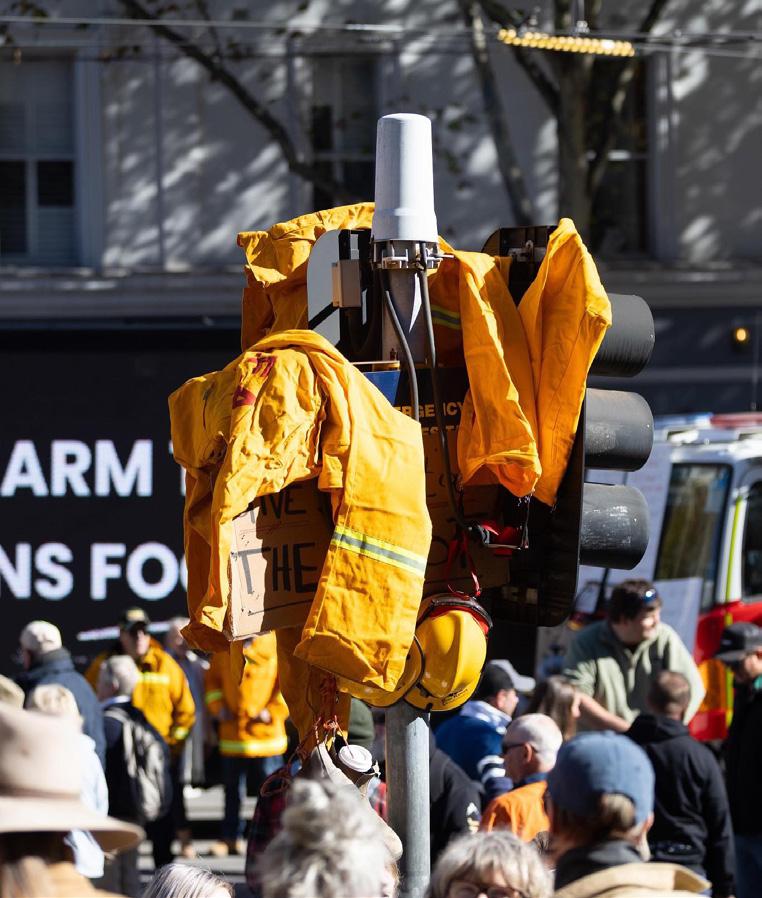
“deeply concerned about the financial impact this decision will have on residents,” emphasising that “this is not a council-imposed charge — it’s a state government tax we are now required to collect on their behalf.” She described it as “incredibly disappointing such a significant change was pushed through without genuine consultation with local government or consideration of the burden this places on our communities.”
Highlighting the struggles faced by local households, Mayor Ewart-Kennedy noted that “our farmers, families and small business owners are already doing it tough with soaring cost-ofliving pressures and drought conditions. Now they’re being asked to shoulder a levy which could double or nearly triple their rates.” She argued that “the state government has chosen to shift the financial load of emergency services onto those least able to absorb it. It’s unjust, it’s disproportionate, and it hits rural communities like ours the hardest.”
The mayor also expressed frustration that emergency service volunteers — often the backbone of rural response efforts — are now being financially penalised. “The reality is, this tax
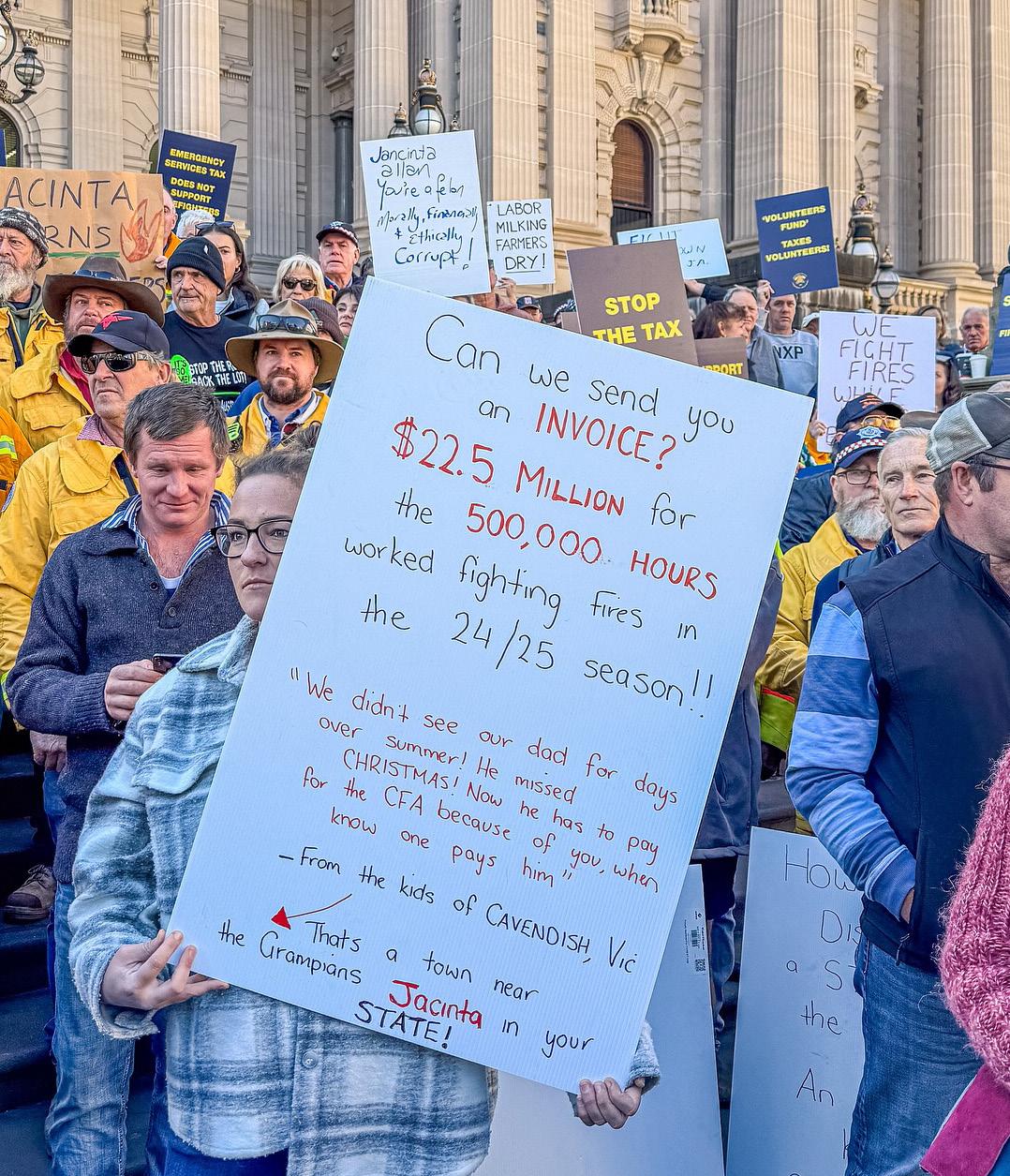
amounts to a double charge on the very people who volunteer their time — and often their own resources — to protect our communities,” she said. “To impose a levy on those same people, without support or recognition, is alarming. As Mayor, I cannot in good conscience remain silent on this policy.”
Preliminary modelling by Council reveals the severity of the changes: residential properties valued at $750,000 could see rate increases of around 31%, while commercial and industrial properties may face hikes between 38% and 73%.
Most concerning is the potential 110% increase for primary producers — a devastating blow for farmers already facing economic pressure.
Adding to Council’s concern is the ambiguity around how the levy will be implemented and who will be exempt. According to Mayor EwartKennedy, “the state has not only shifted the cost but also the responsibility onto local government, with no support or clear framework to manage exemptions or community communication.” She warned that the rushed rollout has already sown confusion: “We are already hearing confusion in the community — many mistakenly believe this is
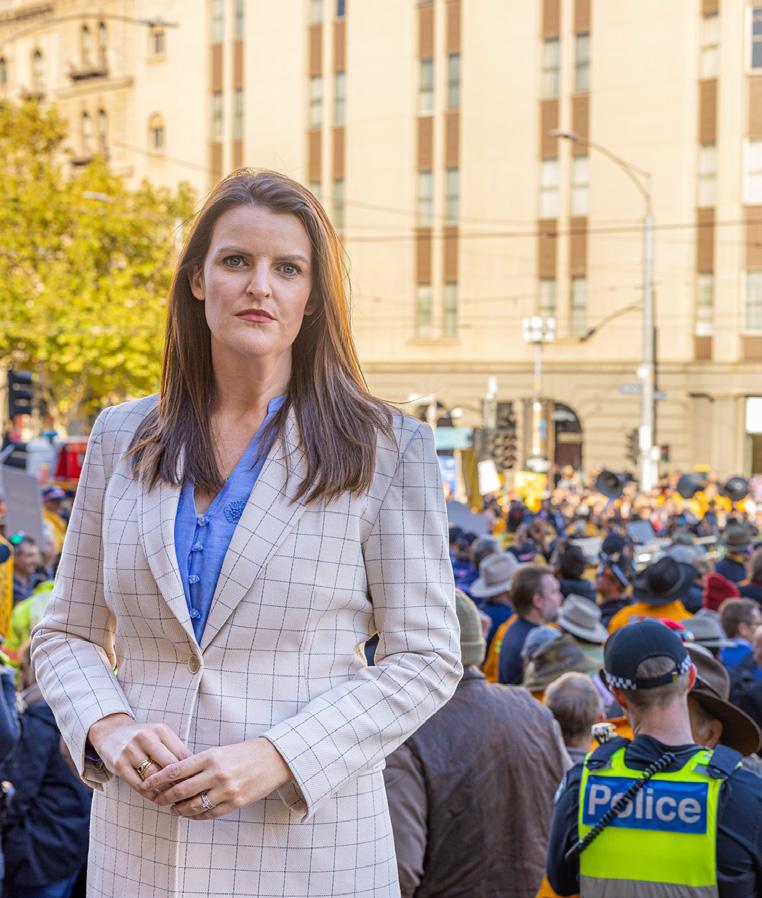
a council charge, when it is not.”
With the levy now legislated, Strathbogie Shire Council is calling on the Victorian Government to revise its approach. The Council is urging the state to recalibrate the levy formula so that rural and regional communities aren’t unfairly penalised, to ensure funds raised in regional areas are reinvested locally, and to shift the responsibility of levy collection from councils to the State Revenue Office.
Mayor Ewart-Kennedy made the Council’s position clear: “We stand with other rural councils in saying this policy must be improved — it cannot be allowed to cause irreversible harm to regional Victoria.” She concluded, “Our residents already do more than their fair share to support emergency services. This new levy hits them where it hurts most.”
Strathbogie Shire Council will continue to advocate through Rural Councils Victoria, the Municipal Association of Victoria, and directly to the Victorian Government for a fairer system that recognises and protects the unique challenges faced by rural communities.
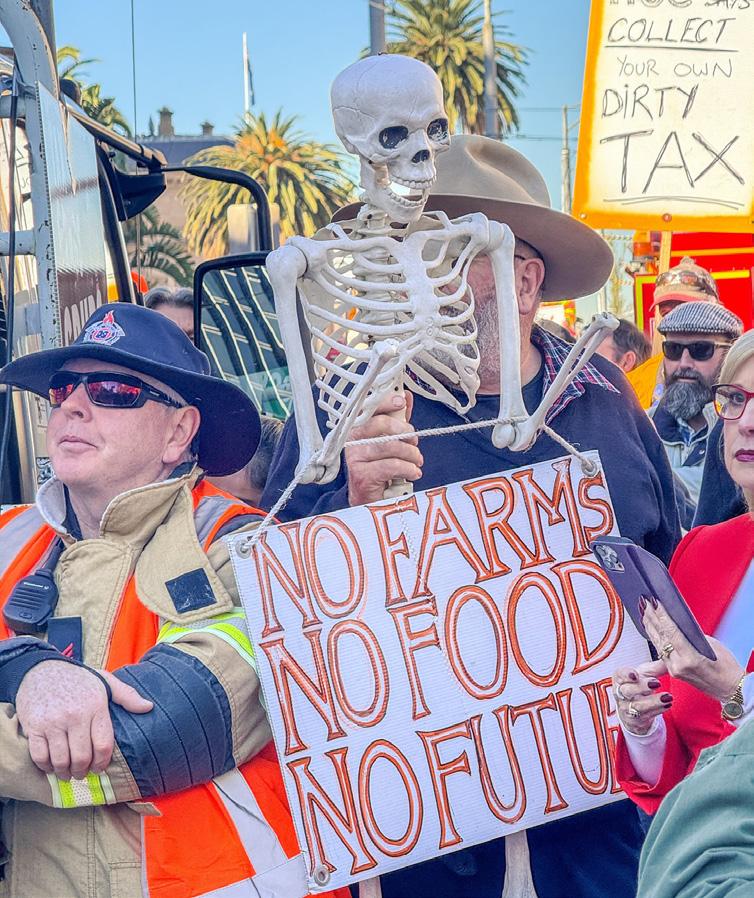
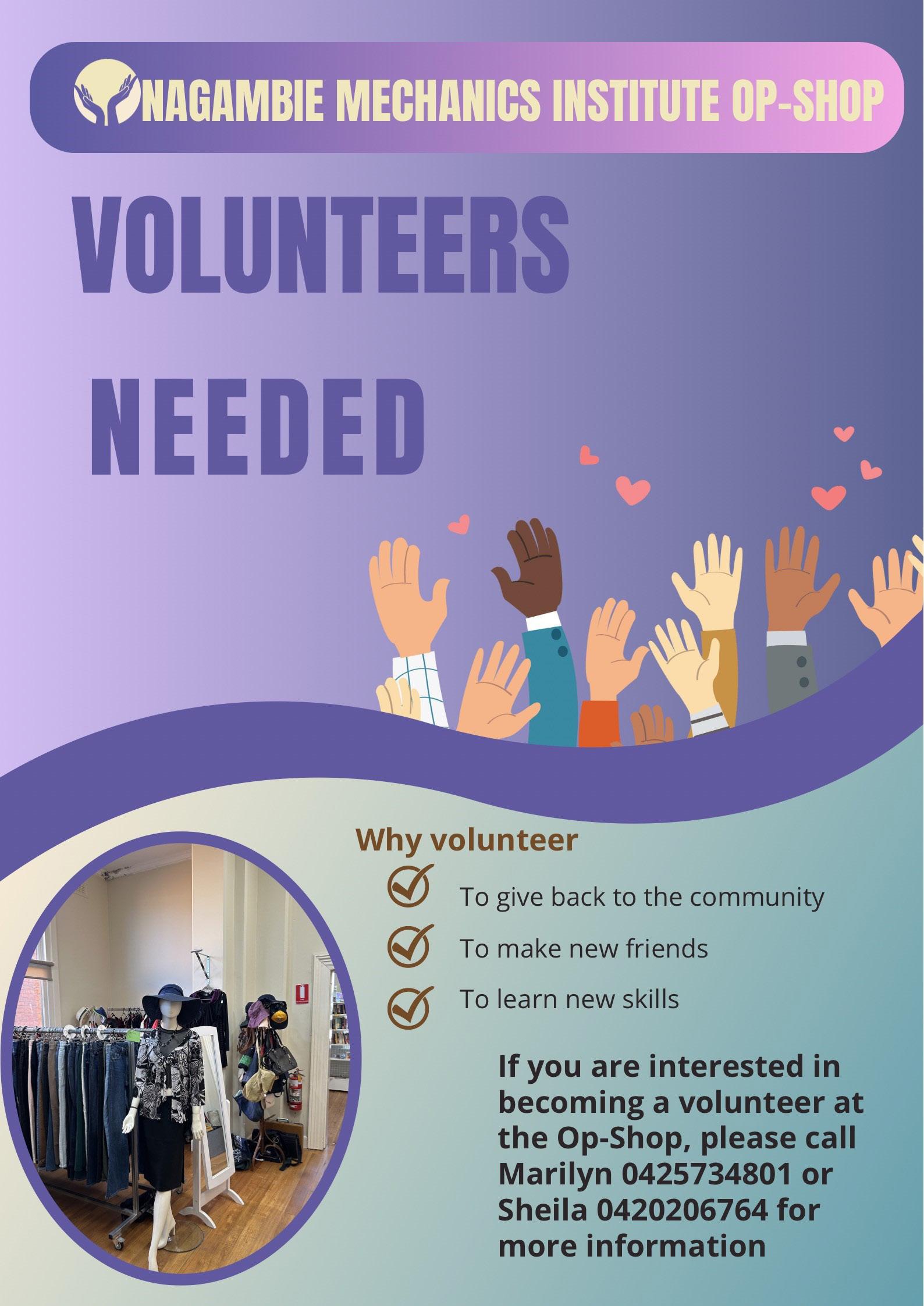

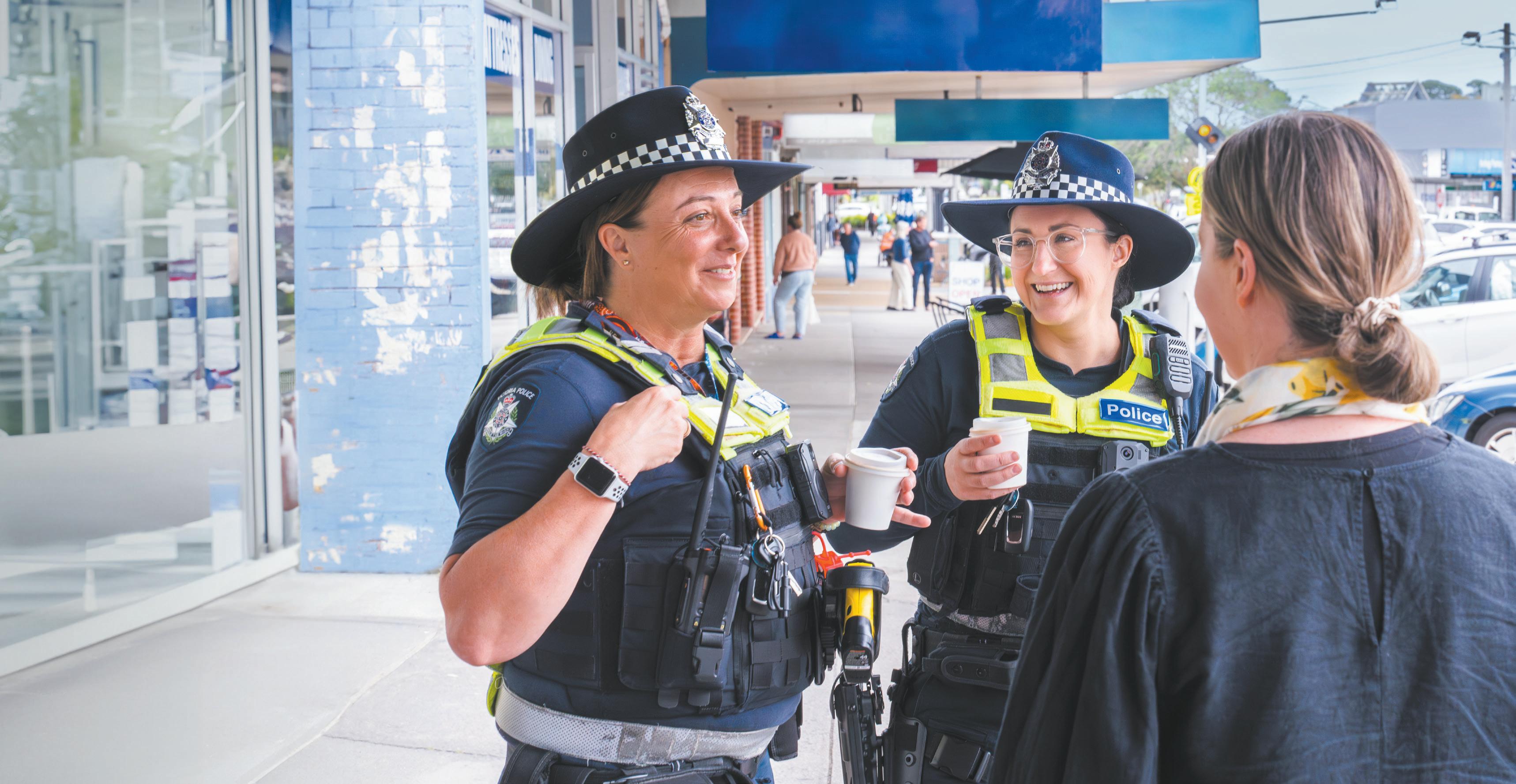
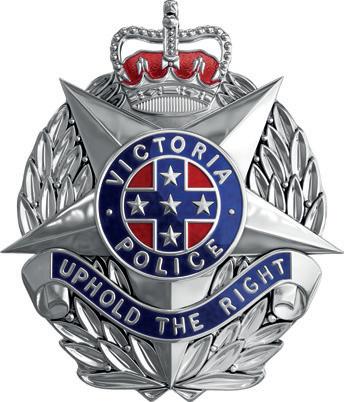
Milestone for Local Resident at Nagambie parkrun
On Saturday, 24 May, Nagambie parkrun celebrated a special milestone as local resident Will Day completed his 50th parkrun. A dedicated participant since the event's inception in Nagambie, Will has become a familiar face on the course — often seen pushing his 9-monthold daughter, Alice, in a pram as he races to the finish.
Despite the added challenge, Will consistently posts competitive times, averaging around 22 minutes, and boasts a personal best of 21 minutes and 25 seconds. “Not bad with the handicap of pushing a pram,” the event organisers noted, with a tone of admiration. Will’s wife, Michelle, is also a valued member of the local parkrun community, having run the course herself and volunteered in key roles such as timekeeper and barcode scanner in the early days of the event. The couple's ongoing involvement exemplifies the spirit of parkrun. “We are very proud of them all to support this event every week and again we congratulate Will on this milestone.”
In true humble fashion, Will was not looking for attention. “He was very modest and didn't want any fanfare, but we are grateful that he allowed us to share his success, in the hope that we can encourage more people to come along, all ages and abilities welcome.”
The organisers would like to remind everyone that parkrun is for everyone. “Remember, that it is also a walk, not just a run. So if you want to get a bit of extra exercise, and enjoy our amazing course along the boardwalk, be there at 8am every Saturday morning.”
There are also plenty of opportunities to get involved as a volunteer. Whether it’s timekeeping, acting as a tail walker, or handing out tokens at the finish line, every role contributes to the success of this community event. “Please contact our volunteer coordinator, Julie Dobbie on 0427 343 704 or email Nagambielake@parkrun.com if you would like to help.”
Come along, bring a friend, and be part of something that celebrates health, community, and personal achievement — just like Will.
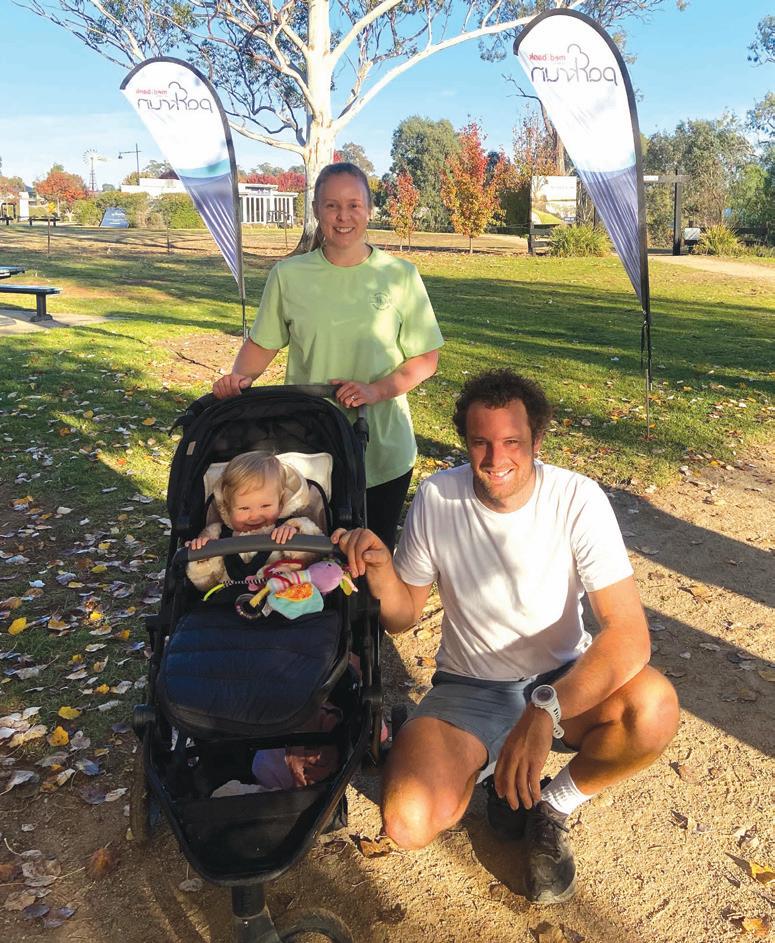
Tomato Brown Rugose Fruit Virus (ToBRFV):
Biosecurity Threat Prompts Response in Victoria
Agriculture Victoria is continuing its response to the detection of tomato brown rugose fruit virus (ToBRFV) at a tomato glasshouse facility in northern Victoria. The virus was confirmed on 14 January 2025, after being identified in tomato seedlings that were transported from South Australia in December 2024.
To protect Australia's $5.8 billion vegetable industry and $2.8 billion plant nursery industry, Agriculture Victoria has implemented a nationally coordinated eradication strategy. According to authorities, “this plan is a nationally agreed approach with industry input,” ensuring collaboration between government and growers to address the threat swiftly and effectively.
On 11 May, ToBRFV was again detected— this time in seedlings planted in a previously decontaminated glasshouse as part of recovery efforts under the National ToBRFV Response Plan. Another batch of seedlings from the same NSW nursery, already present on the infected property, was later confirmed positive on 19 May.
Although the virus was detected shortly after the seedlings arrived on the property, authorities believe the site itself is not the original source of the latest detection. “Given that the seedlings had only been on the property for a few days, it is unlikely that this new detection has originated from the Victorian property.”
Agriculture Victoria continues to work closely with the affected business and other jurisdictions to manage the biosecurity risk. The property remains under quarantine to prevent the virus from spreading. Currently, “there is no evidence of ToBRFV in any other part of Victoria.”
The situation is being reviewed by the national Consultative Committee for Emergency Plant Pests, which will assess surveillance findings and trace results from the NSW production nursery. These findings will help determine future actions and updates to the National Response Plan. In the meantime, “the current National Response Plan will continue to be followed while investigations at the NSW production nursery are underway.”
Understanding Tomato Brown Rugose Fruit Virus (ToBRFV)
What Is ToBRFV?
ToBRFV is a plant virus that affects tomatoes, capsicums, and chillies, posing a serious biosecurity risk to Australia’s horticulture industry. It is officially listed as a National Priority Plant Pest due to its rapid spread and damaging effects on crop production. While highly destructive to plants, “there is no risk to food safety or human health from eating tomatoes with this virus.”
Symptoms of ToBRFV
• In fruit, the virus may cause:
• Yellow (chlorotic) spotting and marbling
• Deformation and uneven ripening
• Wrinkled brown (rugose) patches
In leaves, symptoms include: Yellowing (chlorosis)
• Mosaic or mottled patterns, especially in younger leaves
• Leaf crumpling and deformation
• Blister-like textures on the leaf surface
These symptoms can significantly reduce both yield and fruit quality. Visual documentation includes:
• Figure 1–4: Tomato fruit and leaf symptoms
• Figure 5: Symptoms on capsicum fruits and foliage
Host Plants and Carriers
In Australia, the primary hosts of ToBRFV are:
• Tomatoes (Solanum lycopersicum)
• Capsicum and chilli (Capsicum annuum)
Additionally, several weeds and ornamental plants can act as viral reservoirs, allowing the virus to persist between growing seasons. These include:
• Fat hen (Chenopodium murale)
• Quinoa (Chenopodium quinoa)
• Petunia hybrids
• Black nightshade (Solanum nigrum)
Why Is It a Concern?
ToBRFV is particularly damaging because it can lead to up to 70% crop loss and reduce the marketable yield of fruit by 10–15%. It spreads rapidly and is extremely difficult to control once introduced. Of even greater concern is its ability to bypass resistance mechanisms. Specifically, it “easily overcomes the Tm-22 resistance gene that is commonly used against other serious Tobamoviruses.” Currently, there are no known tomato, capsicum or chilli varieties immune to ToBRFV infection.
Global and Australian Context
First identified in Israel in 2014, ToBRFV has since been reported in:
• Europe
• The Middle East
• China, Mexico, and the United States
This wide spread has been largely driven by international seed trade. “The wide distribution of ToBRFV has been attributed to the global movement of seed.”
In Australia, the virus was confirmed on three properties in South Australia in 2024 and one in Victoria in January 2025. It is currently the subject of an active eradication effort by plant health authorities.
How Is ToBRFV Spread?
ToBRFV is highly transmissible and can spread via:
• Infected seeds, seedlings, grafts, or cuttings
• Plant-to-plant contact
• Contaminated tools, gloves, machinery, and clothing
• Bumblebees, through pollination activities
The virus can remain viable for months in: Seeds
• Plant waste
• Contaminated soil
Once infection occurs, “the only way to eradicate the virus is by destroying all infected plants and material.”
What Producers and Gardeners Should Do
Commercial Growers Are Advised To:
• Source seed and seedlings from reliable, virus-free suppliers
• Test seed batches through services such as Crop Health Services
• Monitor crops frequently for symptoms
• Enforce strict biosecurity protocols on staff and visitors
• Disinfect tools and equipment using a 1% sodium hypochlorite solution (1 part pool chlorine to 10 parts water)
• Remove wild host plants or volunteer crops that may harbour the virus
Growers should also reach out to seed providers for verification: “seek their assurance about what specific testing has been applied to batches of seeds and whether they have been appropriately tested for ToBRFV.”
Advice for Home Gardeners
Home gardeners can also play a critical role in virus prevention. They are advised to:
Inspect plants regularly for pests and signs of viral infection.
Report any unusual symptoms to the Exotic Plant Pest Hotline: 1800 084 881
Source seeds and seedlings only from trusted local nurseries
Community Support
Support for those affected by the detection is currently being coordinated by Moira Shire Council.
If you require assistance, contact the council at 03 5871 9222.
For more details and resources, visit the Tomato brown rugose fruit virus (ToBRFV) page.
Letter to the editor –Bleak budget for our region
The Victorian State Budget for 2025-26 was released, and sadly after some initial looks, it is not great news for our region.
Many of the projects we had been advocating for remain without funding, including:
• A public secondary school in Kilmore
• Upgrades to our sporting facilities in areas like Seymour and Violet Town
• Investment into local traffic lights and signage in Broadford Upgrades to CFA brigades
• And the need for more train services along the North-East line.
We have also seen huge cuts to our already pathetic roads budget, delays to the Kilmore Bypass project, and a lack of childcare and housing investment locally once again.
On top of that, the Emergency Services Tax is front and centre as an additional cost all of us will have to pay.
To put it simply, this is a budget that completely fails regional Victoria.
Agriculture funding has been cut by $77.6 million –almost 13 per cent – amid a crippling drought in many areas of the state.
Regional development funding has also taken a hit a 17 per cent hit – with Labor slashing it from $296.7 million to $245.6 million.
Once again this is a government that fails to recognise the value of its regional communities – including those who put food on the table.
Despite all of the increased taxes, ignored projects, and cuts to services - Victoria's debt is still set to blow out to $194 billion by 2028-29.
That will be $28.9 million in interest every single day paid by all Victorians – or $10 billion every year.
I look forward to speaking with many of our local organisations about their funding futures following this budget – and hope they are receiving all the help they need to keep serving our communities.
So to our local community groups – please reach out and keep me posted about how this budget has impacted you.
Strathbogie Shire Farmers Left Behind in Drought Relief Rollout
Strathbogie Shire Council has voiced deep concern over the Victorian Government’s recent decision to exclude the region from its expanded $29.4 million drought assistance package, despite mounting evidence of worsening local conditions.
Farmers across the Shire are grappling with acute feed shortages, depleted water supplies, and skyrocketing freight costs—some reportedly paying up to $20,000 per load to transport hay from interstate. Yet, while neighbouring areas are now eligible for financial aid, Strathbogie producers remain unsupported.
Mayor Claire Ewart-Kennedy expressed the Council’s frustration, stating the omission sends a disheartening message to primary producers already stretched to their limits. “We are hearing directly from our farmers — these are not just numbers or forecasts. These are real people making heartbreaking decisions about whether they can afford to keep going,” she said.
The current drought relief package includes infrastructure grants, mental health support, and decision-making assistance. While these initiatives are welcomed, Council says they fall short of what Strathbogie’s farming community urgently needs. “Right now, our producers don’t need infrastructure grants. They need feed. They need freight subsidies. And they need financial relief to keep their stock alive and their businesses afloat,” Cr Ewart-Kennedy said.
She further highlighted that long-term support services cannot substitute immediate on-ground aid. “We recognise and value the support being offered in mental health and business resilience. But without help to meet the basic needs of stock and soil, that support rings hollow for many,” she added.
Adding to Council’s frustration is the fact that several Local Government Areas (LGAs) in the Hume region— facing the same climatic and economic hardships as those receiving aid—have also been excluded. This inconsistency is compounding disadvantages across communities already struggling to cope.
Strathbogie Shire Council is calling on Agriculture Victoria to take immediate action. Specifically, it is urging the department to reassess drought conditions across the Hume region, revise the eligibility criteria for support, and extend the current assistance package to all affected LGAs, including Strathbogie.
Cr Ewart-Kennedy warned of the broader implications of the exclusion, noting it also bars farmers from partial rebates under the Emergency Services and Volunteer Fund, which is linked to infrastructure grant access. “This is a moment that calls for equity, urgency and leadership,” she said. “Drought doesn’t stop at shire borders — and neither should drought relief.”
For more information, visit the Strathbogie Shire Council website at www.strathbogie.vic.gov.au.
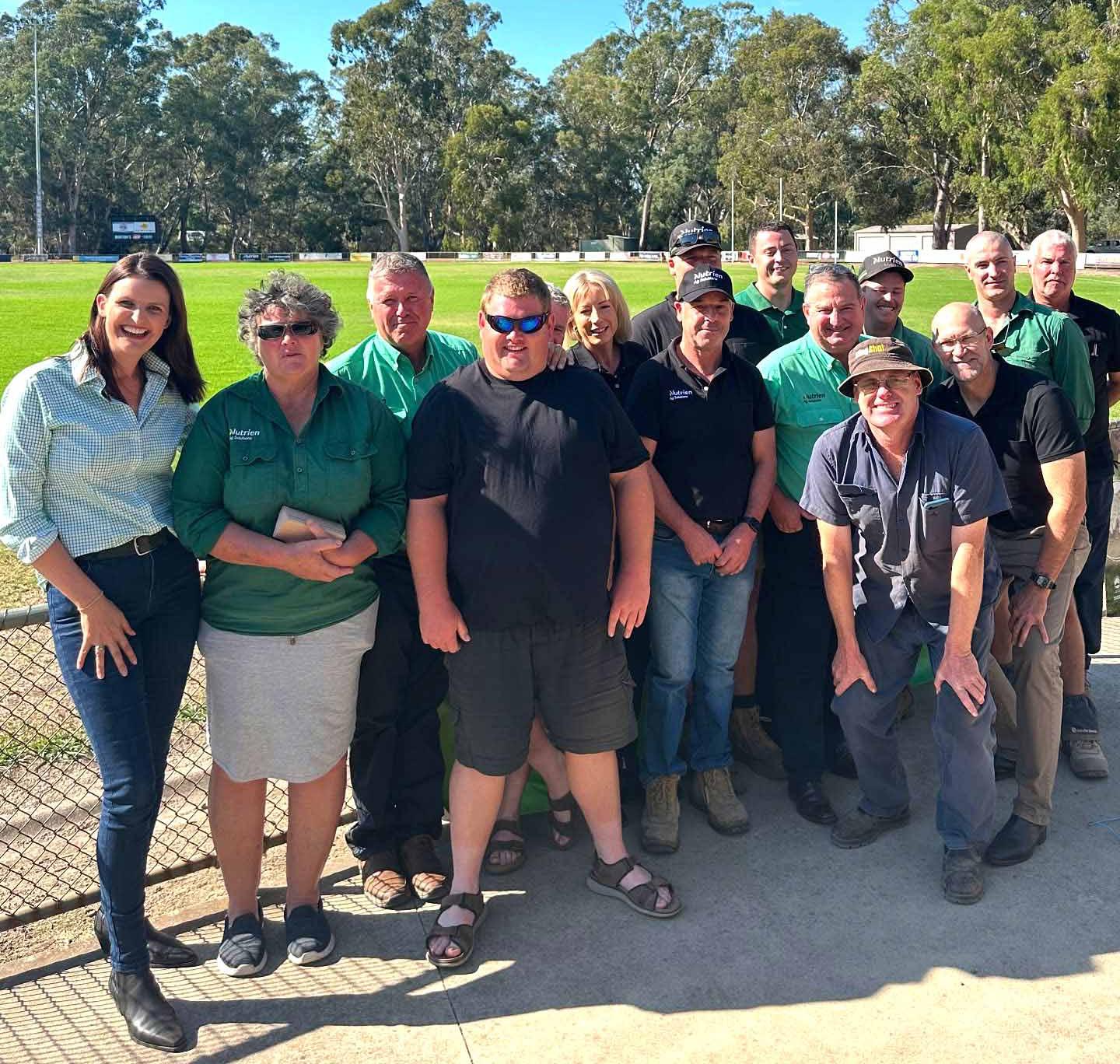
Support and Solidarity for Farmers at Upcoming Euroa Cattle Sale
Farmers facing tough times will have the opportunity to connect with mental health professionals and local leaders at the Euroa Cattle Sale next Wednesday. The Nationals’ Member for Euroa, Annabelle Cleeland, will be present to offer free, confidential support to anyone in need.
Ms Cleeland emphasised that everyone is welcome—regardless of whether they are participating in the sale.
“This is an opportunity for our farmers to be amongst friends and supporters,” Ms Cleeland said.
“Farming can be isolating and stressful work, and recent conditions have not made this any easier.
Nagambie Seniors
One of our members Helen Gilbert came along as our guest speaker and shared her experiences from her recent trip to the Antarctic on Friday 16th May. About twenty members attended and we thank them for supporting us, ensuring we can offer a wide cross section of interesting activities. A light luncheon was served following her very informative speech. She had many photos to show us on our big screen and her recap of the trip was excellent. Thank you Helen for your time and your excellent slide preparation.
Our next activity is a night at the Kilmore Trots on Thursday, 26th June. Transport is provided for pick up and return to the hall. The club has subsidized the night and for a two course meal and tea, coffee, scones, jam and cream. The cost is only $45. Please advise if you would like to join the fun of a night out at Kilmore Trackside. Even
“If you are concerned about yourself, your neighbour, or anyone in your community that may be doing it tough – I encourage you to come join us for a chat and a cuppa amongst friends.”
She highlighted that extreme weather conditions and limited government assistance have pushed many farmers to the brink.
“The effects of this drought and a lack of support from government has unfortunately been felt really significantly in our towns – and I wanted to ensure that our farmers had someone to speak to and rely on if needed,” Ms Cleeland said.
“Our paddocks are bare, our dams are dry, and our farmers are at breaking point. Saleyards and freight networks are under enormous pressure, while hay is being trucked in at massive expense just to keep stock alive.
“Despite this, drought still hasn’t been formally recognised in the North-East – and our farmers are unable to access crucial support that would significantly boost their mental health, and
if you are not into having a bet or two, the night out and the company is fun!
Our Super 66 competition is due to start on 7th June, if you have not got a ticket yet, please be quick, they are selling fast. It is $20 for the 10 week season, and prizes are 1st $50, 2nd $30 and 3rd $20. No effort required, if your number comes up, we drop in your winnings to you!
There is early planning to gauge interest in a trip to Phillip Island next year. Watch this space, or the noticeboard to get further details as the planning and pricing continues.
The next Movie Day will be Tuesday 10th June @1pm, screening “Something’s Gotta Give”. Come and enjoy the movie and the interval snacks!
Membership fees for some remain unpaid, if you are not sure, please check with us. We are making an effort to get the membership lists correct and current. Changes of address need to
Nagambie Opportunity Shop Thanks the Community and Calls for Winter Volunteers
Further to our recent article and appeal for help, the team at the Nagambie Mechanics Institute Opportunity Shop would like to extend a heartfelt thank you to our wonderful community for your ongoing support and cooperation. We have recently noticed a significant reduction in the amount of unsuitable and poor-quality donations left at our doors, and we sincerely appreciate your efforts in helping us maintain a high standard of goods for our customers.
Your commitment to donating only clean, good-quality items has made a real difference. It not only helps us manage our resources more effectively, reduces our costs to take to refuse station, but also ensures that every item we offer meets the needs and expectations of our valued shoppers.
Volunteers Needed
As winter approaches, many of our dedicated volunteers are taking a well-earned break to travel, and we are currently looking for new helpers to fill shifts during the coming months. If you have a few hours to spare each week and would like to be part of a friendly, communityminded team, we’d love to hear from you.
Volunteering at the Op Shop is a great way to meet people, give back to the community, and have some fun along the way. Please drop into the shop or contact us directly to express your interest.
Thank you once again, Nagambie, for your continued kindness and support.
Volunteers interested, please contact Marilyn on 0425 734 801 or Sheila on 0420 206 764
production capabilities.
“Every day without support is a day closer to lost stock, abandoned farms, and growing mental health trauma.”
Ms Cleeland will be joined by regional mental health professionals and Strathbogie Shire Councillors, offering a supportive environment for those attending.
The Euroa Cattle Sale takes place at the Euroa Saleyard, 58 Sutherland Street, starting at 9am on Wednesday, June 4.
In a further push for action, Ms Cleeland has launched a petition urging the State Government to formally recognise the drought affecting North-East Victoria. The petition has already gathered over 5,000 signatures.
To sign, visit: http://www.parliament.vic.gov.au/ get-involved/petitions/drought-in-north-eastvictoria
be notified, so please do so if you have moved within the last two years. A list will be created to show those who may be unaware, or would prefer not to continue as a member and will be put up at the hall for reference.
Payments can be made at the hall or online banking. Details are BSB 083 798 Account No. 392522181 Please remember to put your name on the payment.
I am happy to email any interested people who would like to receive the newsletter monthly. We also have collection points around town, at the Post Office, the Info Centre, Library and NLCH. Pick up a copy or email nagambieseniors@gmail. com to go on the list. Or phone Jill on 0419 567
580
We also wish to thank Go Nagambie for including our Club details on their website, check it out. https://www.gonagambie.com.au/ live/community-groups-and-clubs/nagambieseniors
Brett Whiteley Exhibition Opens This June
at SAM
This winter, Shepparton Art Museum (SAM) invites visitors to immerse themselves in the artistic world of one of Australia’s most iconic creatives. Brett Whiteley: Inside the Studio, an exclusive Victorian exhibition, opens on Saturday 28 June and promises a rare, intimate look into the creative environments that shaped Whiteley’s legendary career.
Drawn from the prestigious collections of the Art Gallery of New South Wales and the Brett Whiteley Studio, this compelling exhibition showcases the artist’s expansive body of work across multiple media — from paintings and drawings to sculptures, photography and ceramics. The exhibition offers a unique lens into how Whiteley’s studio spaces influenced the scale and subject matter of his work, ultimately becoming extensions of his own artistic identity.
Brett Whiteley: Inside the Studio will be on display at SAM from 28 June to 5 October 2025. Admission is free, though tickets are required to manage capacity. The opening celebration will be held on Friday 27 June from 6pm to 8pm at the Shepparton Art Museum, located at 530 Wyndham Street, Shepparton VIC. This special event will offer an exclusive first look at the exhibition and feature a live DJ set inspired by the music that once filled Whiteley’s studio. Registration details for this free event will be released soon.
Ticket registration for the first four weeks of the exhibition is now live and can be accessed through the SAM website. Visitors are strongly encouraged to book in advance to ensure a convenient time slot. Each ticket provides timed entry to the exhibition, so guests should arrive promptly at their designated time. Tickets for dates beyond July will be released in fortnightly increments.
Guided tours for groups of five or more people will be available on Tuesdays between 10am and 3pm throughout the exhibition period. Those interested in scheduling a group tour can contact the museum at bookings@sheppartonartmuseum.com.au.
If you have any questions or require assistance, please reach out to SAM by emailing bookings@ sheppartonartmuseum.com.au or calling 03 4804 5000. Shepparton Art Museum is open six days a week, from 10am to 4pm, and is closed on Tuesdays. Entry to the museum is free.
Come and experience the creative spirit of Brett Whiteley like never before — inside the spaces where his imagination came to life.



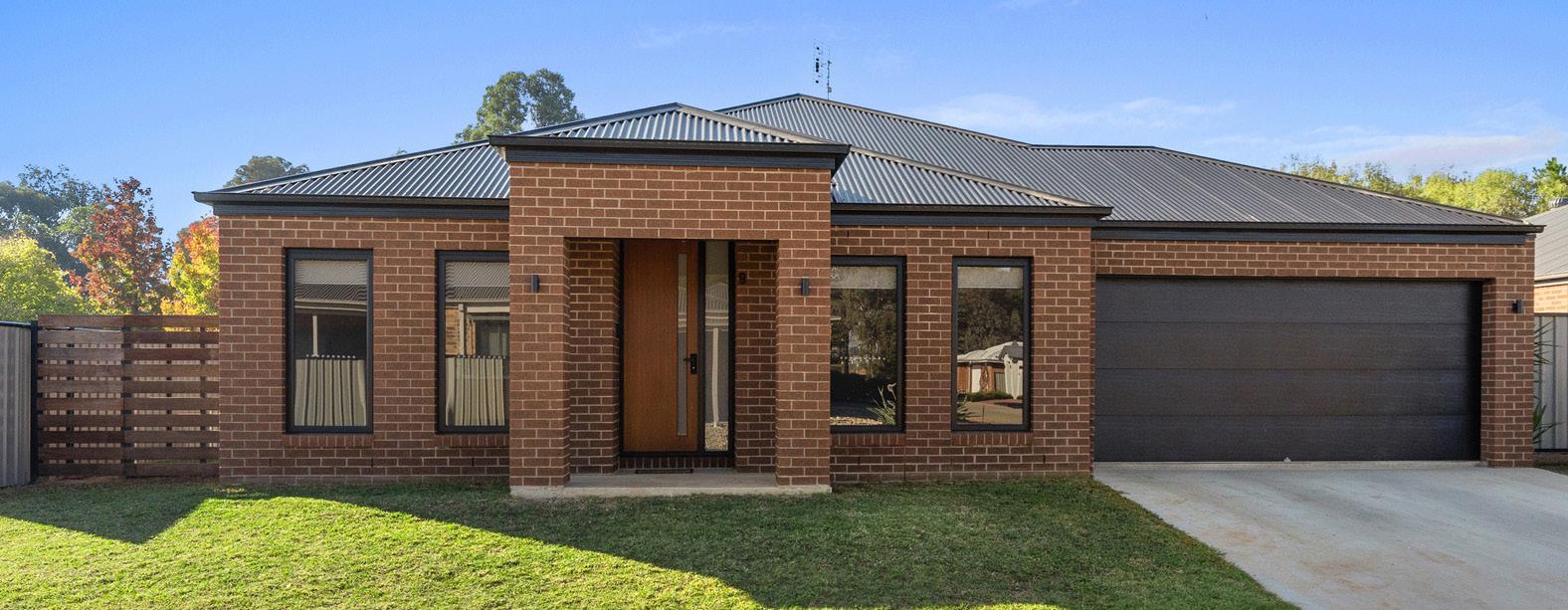

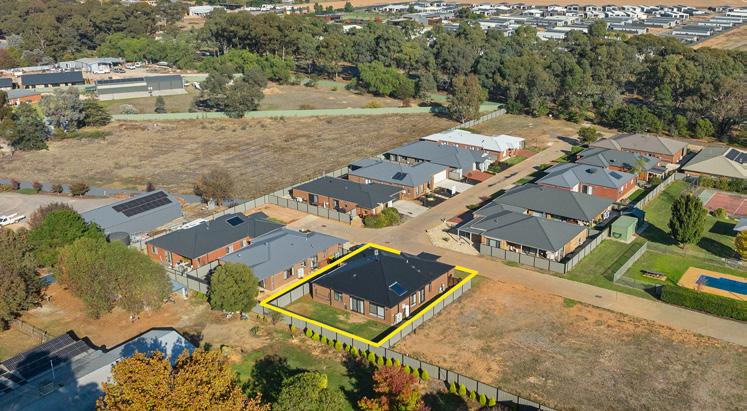




May Council Meeting Wrap-Up
Planning Decision – 2 Millards Lane, Euroa Council resolved to support an alternate motion to issue a Notice of Decision to Grant a Permit for a two-lot subdivision at 2 Millards Lane, Euroa. This was a complex application with a range of considerations, and Council’s decision reflects careful assessment under the Strathbogie Planning Scheme.
School Crossing Safety – Goulburn Street, Nagambie
In response to community concerns and a recent Road Safety Audit, Council has endorsed a permanent school crossing supervisor for Goulburn Street in Nagambie. The audit identified high traffic and pedestrian volumes, along with safety risks that support this decision. A contractor will be engaged to deliver the service, with up to $34,000 allocated in the draft 2025–26 budget.
Although the site does not currently qualify for State Government funding—due to it being on a Council-managed road—we will continue to advocate for financial support. Officers will also investigate infrastructure improvements in line with previous safety studies and write to relevant Ministers seeking contributions to the service.
Euroa Saleyards – Service Continuity and Fee Updates
Following the closure of Scanclear Pty Ltd, Council has appointed Outcross Agri-Services to deliver droving, scanning, weighing and data entry services at the Euroa Saleyards. The new contract includes updated service rates, and Council has adjusted user fees for the May and June 2025 cattle sales accordingly. These revised fees will also be incorporated into the 2025–26 budget. Local stock agents were consulted and have supported the transition, which ensures uninterrupted operations and financial sustainability for the facility.
Firewood Collection Access
In urgent business Council passed a motion requesting officers to investigate and implement strategies to improve community access to firewood across the Shire, beyond current Forest Fire Management collection sites
Violet Town Streetscape Upgrade – Safer, Greener, More Connected
Strathbogie Shire Council is pleased to announce the commencement of Stage 1 of the Violet Town Streetscape Project. This important upgrade responds directly to community concerns about safe pedestrian access, a lack of suitable crossing points, and traffic speeds through the town centre.
The works will begin on Tuesday 3 June 2025, with Jarvis Delahey Contractors appointed to deliver the first stage. The project will include the installation of four pedestrian crossing outstands, new concrete kerbs and footpaths, and enhanced landscaping to improve both safety and aesthetics.
The construction timeline is as follows:
• Week 1: Identification of underground services and demolition
Weeks 2–4: Concrete kerb and path works
Week 5: Line marking and landscaping
During this time, residents can expect: Four designated construction zones with fencing
Temporary lane narrowing — motorists are advised to drive with caution
Temporary restrictions on property access where footpaths are being replaced (we’ll coordinate with affected properties)
• Adjustments to parking and bin collection in the work areas
These works are a key step towards creating a safer and more welcoming town centre for pedestrians and motorists alike.
If you have specific access needs or concerns during construction, please contact Jarvis Delahey Contractors’ site contact Nathan Olsen on 0401 957 266. For general project inquiries, contact Council’s Project Manager Indika Ranathunga on 1800 065 993 or email info@ strathbogie.vic.gov.au.
We appreciate your understanding and support as we deliver this exciting improvement for Violet Town.
Your New Purple Bin is Coming!
Purple bins for glass recycling will be delivered to kerbsides across the Shire between June 2 and June 15.
If you haven’t received yours by June 15, please contact Council.
This is part of Victoria’s move to a standardised four-bin system, supporting better recycling and less waste to landfill—an important step under the Recycling Victoria: A New Economy plan.
What you need to know:
Every property with a kerbside service will receive a glass-only (purple-lidded) bin
Glass will no longer be accepted in yellow-lidded recycling bins
The draft 2025–26 Council Budget proposes no increase to the annual Waste Charge, meaning no additional cost for this new service
Let’s work together for a cleaner, greener future!
Careers at Strathbogie
ICT System Administrator/Project Officer
• Full time, permanent opportunity.
• Band 7 - $93,274 per annum.
• Applications close 9am, Tuesday 10 June 2025
Maternal and Child Health Nurse
• Part time (0.6), permanent opportunity As per ANMF Award 2020 – from $99,430 to $103,361 per annum, pro rata Applications close 5pm, Monday 2 June 2025
Community Safety Officer
Part time .06, permanent opportunity Band 5 - $71,444 per annum, pro rata Applications close 5pm, Monday 2 June 2025
Events & Business Relationship Support Officer
• Full time, permanent opportunity.
• Band 5 - $71,444 per annum.
• Applications close 5pm, Monday 2 June 2025
Grow your career in a place that values people, community, and purpose.
Join us and help shape a thriving region while enjoying the lifestyle benefits that come with living and working in one of Victoria’s most picturesque Shires.
Visit www.strathbogie.vic.gov.au/careers to find out more and apply today.
“Get the heads up on tech neck!” –National Spinal Health Week
is 26 May to 1 June 2025
National Spinal Health Week (26 May to 1 June 2025) is the flagship initiative of the Australian Chiropractors Association (ACA). For almost 30 years, ACA’s annual community health initiative has shone a spotlight on spinal health issues that affects millions of Australians while encouraging individuals and communities across our nation to take proactive steps to improve spinal health.
With over 34 million mobile phone connections and 95% of Australians accessing the internet via a smartphone, the focus of the Australian Chiropractors Association’s (ACA) annual national Spinal Health Week (26 May to 1 June 2025) is preventing Tension Neck Syndrome (TNS) known as “tech neck”.
Also referred to as ‘text neck’, tech neck is a neckrelated musculoskeletal disorder (MSD) resulting from incorrect or overuse of smartphones, tablets, computers and other electronic devices, with MSDs (including tech neck) costing the Australian economy over $55 billion annually.
MSDs affect the joints, bones, muscles and multiple body areas (including the neck) of people of all ages. If unresolved, the health implications of tech neck can be debilitating causing headaches, neck, shoulder and upper back pain, with the severity of symptoms often equating to the frequency and duration of smartphone, tablet or computer use which, over time, can cause changes to the natural curve of the cervical spine.
Incorrect, non-ergonomic posture habits when using mobile devices and poorly setup computers (including laptops) at home, school, university or in the workplace can lead to developing tech neck.
Dr Jacob Black from Active Spine Centre said, “With tech neck emerging as a major global public health concern as smartphone, tablet and computer use increases; being vigilant in how we use our devices is key to maintaining a healthy spine and avoiding MSDs including tech neck.
“Studies have shown smartphone and computer use can have a significant impact on pain severity among tech neck sufferers with the most prevalent symptoms of neck and back pain linked to the length of time spent using a device and the degree of discomfort experienced,” said Dr Black.
“Although more studies are needed to better understand the implications of incorrect and overuse of technology on spinal health; to help prevent tech neck, we need to adjust our thinking on how we use devices particularly young people who spend prolonged periods with their head bent forward viewing a smartphone.
“With over 5.3 million Australians suffering tech neck; regular movement, stretching, changing posture and the way we use our devices can help prevent tech neck and maximise spinal health,” said Dr Black.
“To help prevent tech neck, the ACA recommends limiting recreational screentime to two hours per day, holding devices at eye level to prevent bending the neck forward, and taking regular breaks every ten minutes to look away from the device and move the neck from side-toside,” he said.
“Computer use is also a primary cause of tech neck. Although most common among office workers, with 75.5% of Australians aged 16 to 64 using computers daily, incorrect use and computer set up can lead to a range of MSDs.
“Whether using a laptop or a desktop at home, school, university or at work, it’s essential for workstations to be set up to be ergonomically correct to help prevent tech neck, increase productivity and maintain overall spinal health and wellbeing,” Dr Jacob Black.
“ACA recommends using computers at a desk with the monitor or laptop screen adjusted to eye level height. It’s also important to use an adjustable ergonomic office chair to allow the knees to be slightly lower than the hips and where possible, users should consider a sit-stand desk to help reduce spinal strain,” he said.
“Importantly, ensure posture is upright with shoulders relaxed and feet flat on the floor and take regular postural breaks every 30 minutes for movement and stretching - not only is this good for the spine it’s also refreshes the mind,” said Dr Black.

ACA President Dr Billy Chow said, “Once primarily experienced by seniors, with the advent of smart devices and wide-spread use of tablets and computers, we’re seeing a growing number of younger patients in their 30s and 40s suffering from cervical spine disorders because of incorrect use of technology devices.
A recent study ‘The Association Between Mobile Phone Usage Duration, Neck Muscle Endurance, and Neck Pain Among University Students’ published in Nature (29.8.2024), examined the correlation between phone use, duration, addiction, neck muscle endurance, and neck pain in university students.
“Although the study focused on mobile phone use by university students, with almost 87% of Australians now regular smartphone users and 75.5% being computer users, it’s fair to consider the findings may be broadly applied to the population generally, particularly young people who’ve grown up using smartphones and tablets,” said Dr Chow.
“During national Spinal Health Week, we’re encouraging all Australians to adjust their thinking on how they use smartphones, tablets and computers by joining the movement to help prevent persistent, aggravated head, neck and upper back injuries which impact productivity at home, school and at work,” he said.
“To better manage spinal health, we must ensure we always maintain good posture starting with the correct sitting position, taking regular breaks from technology to move and stretch.
“When it comes to smartphones, not only must we monitor the length of time we use our devices, but we must be cognisant that overuse and the way we use them can negatively impact our spinal health,” Dr Chow said.
For sufferers of tech neck, while medications may offer temporary relief from neck and back pain, academic studies (including a Sydney University study) show opioids do not benefit people with acute neck or back pain (lasting up to 12 weeks) and have no positive role in treatment.
“Studies show commencing treatment promptly is crucial to prevent further functional decline and progression to a chronic condition. For effective treatment outcomes achieved through a combination of strengthening and stretching exercises, manual therapy and postural correction, consult an ACA chiro,” he said.
“Every week over 400,000 chiropractic healthcare consultations help create well-adjusted Australians as ACA chiropractors play an important role in improving the spinal health of everyday Australians,” said Dr Chow.
With prevention the best protection, get the heads up on tech neck and download ACA’s FREE Avoiding Tech Neck Factsheets and Electronic Device Checklists for Adults, Parents and Students, the Ergonomic Checklist, and the Stand Corrected Stretching Poster available to download from www.spinalhealthweek.org.au.

Australian Chiropractors Association’s Top Ten Tips for Tech Neck Prevention
1. SIT WITH COMFORTABLE UPRIGHT POSTURE with shoulders relaxed and feet flat on the floor.
2. STOP BENDING THE NECK to look down at a phone or tablet. Hold the device at eye level.
3. LIMIT THE TIME spent using a phone to 2 hours per day, especially during leisure time.
4. USE BOTH HANDS or alternate between left and right when typing on a smartphone.
5. DON’T WALK LOOKING DOWN at a phone. Hold your head up straight and engage with the world.
6. TAKE REGULAR MOVEMENT BREAKS to look away from your device, move your neck from side to side and stretch every 10 minutes if using mobile devices and every 30 minutes if using computers.
7. ENSURE COMPUTERS are ergonomically set up correctly so the monitor is at eye level.
8. USE AN ADJUSTABLE ergonomic office chair so the knees are slightly lower than the hips.
9. EXERCISE REGULARLY to maintain a healthy spine and overall health and wellbeing.
10. CONSULT AN ACA CHIROPRACTOR to limit and treat spinal health problems including tech neck.
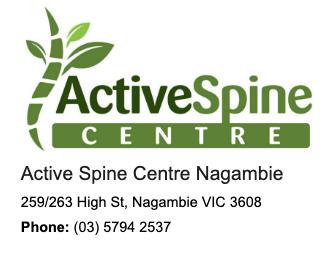

Heads up on Tech Neck
CLOSE 2 JUNE


Campaign Urges Drivers to Slow Down and “Brake the Habit”
Crime Stoppers Victoria, the Transport Accident Commission (TAC), and Victoria Police have joined forces to launch a powerful new road safety initiative — the Brake the Habit campaign — urging all Victorians to curb their speed and rethink their driving habits.
Speeding remains a major contributor to road trauma across the state, playing a role in approximately 25 per cent of serious injury crashes and 30 per cent of fatal incidents. Disturbingly, even low-level speeding significantly increases the risk of a crash, and its consequences are often life-altering.
One in three reports made to Crime Stoppers Victoria currently relates to high-risk driving behaviour, with many submissions featuring dashcam footage — a clear sign of the growing concern within the community about unsafe driving.
“This campaign is a timely reminder to slow down and Brake the Habit before you get caught or someone you care about is seriously injured,” said Stella Smith, Chief Executive of Crime Stoppers Victoria.
She added, “If you are in the car and someone is speeding, say something. We all have a role to play in keeping each other safe, and that starts with sticking to the speed limit.”
As part of the campaign, a compelling four-part video series will be released, featuring firsthand accounts from first responders and trauma specialist Dr Kerry O’Meara, highlighting the devastating effects of speed-related crashes.
The statistics are sobering: driving just five kilometres per hour over the speed limit increases
the risk of a crash by 44 per cent. At 10 kilometres per hour over, that risk more than doubles.
“Speeding remains one of the biggest factors in fatal and serious injury crashes on our roads, and low-level speeding can be just as dangerous as excessive speeding,” explained Samantha Cockfield, TAC Head of Road Safety.
She continued, “Going a ‘few ks over’ won’t save you much time, but travelling five kilometres an hour less could mean the difference between death and avoiding a crash altogether.”
Victorians are encouraged to plan ahead, allow extra travel time, and remain vigilant in observing speed zones — especially in residential and high-risk areas. Simple practices like using cruise control, checking speed signs regularly, and giving yourself more time can dramatically reduce the likelihood of dangerous driving.
Victoria Police Assistant Commissioner Glenn Weir urged the public to take speeding seriously: “Penalties for speeding can range from a fine and demerit points to loss of licence and vehicle impound. Most importantly, you don’t want to be responsible for a collision that could potentially cause serious injury or death.
“Speeding remains the most common offence detected on our roads, so police will continue to be out enforcing and targeting drivers that choose to speed over the limit.”
Crime Stoppers Victoria also reminds the public that anyone can report dangerous driving behaviour anonymously.
“If you witness dangerous behaviour on our roads, you can report it to Crime Stoppers Victoria,” said Ms Smith. “You can include dash cam footage or other supporting videos and images, which can be uploaded when making an online report.”
To learn more about the Brake the Habit campaign or to make a report, visit www. crimestoppersvic.com.au.
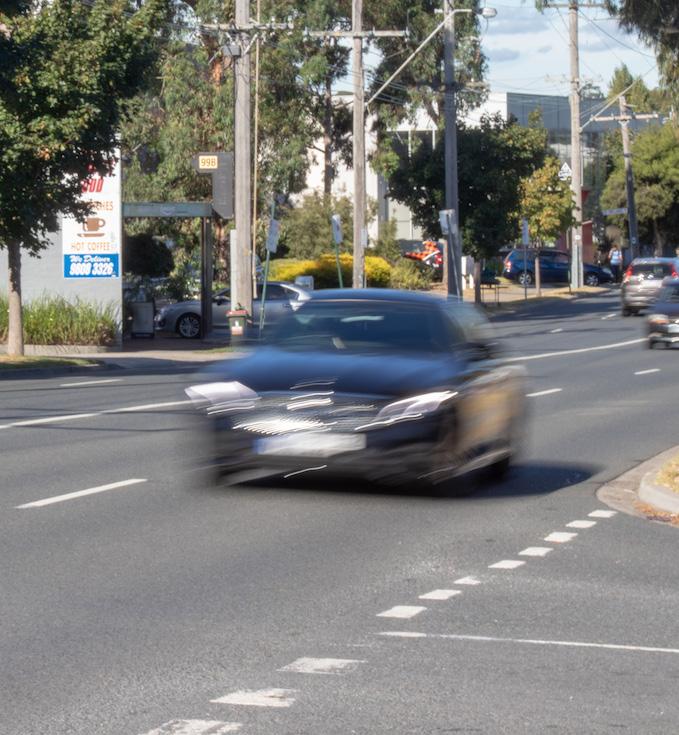

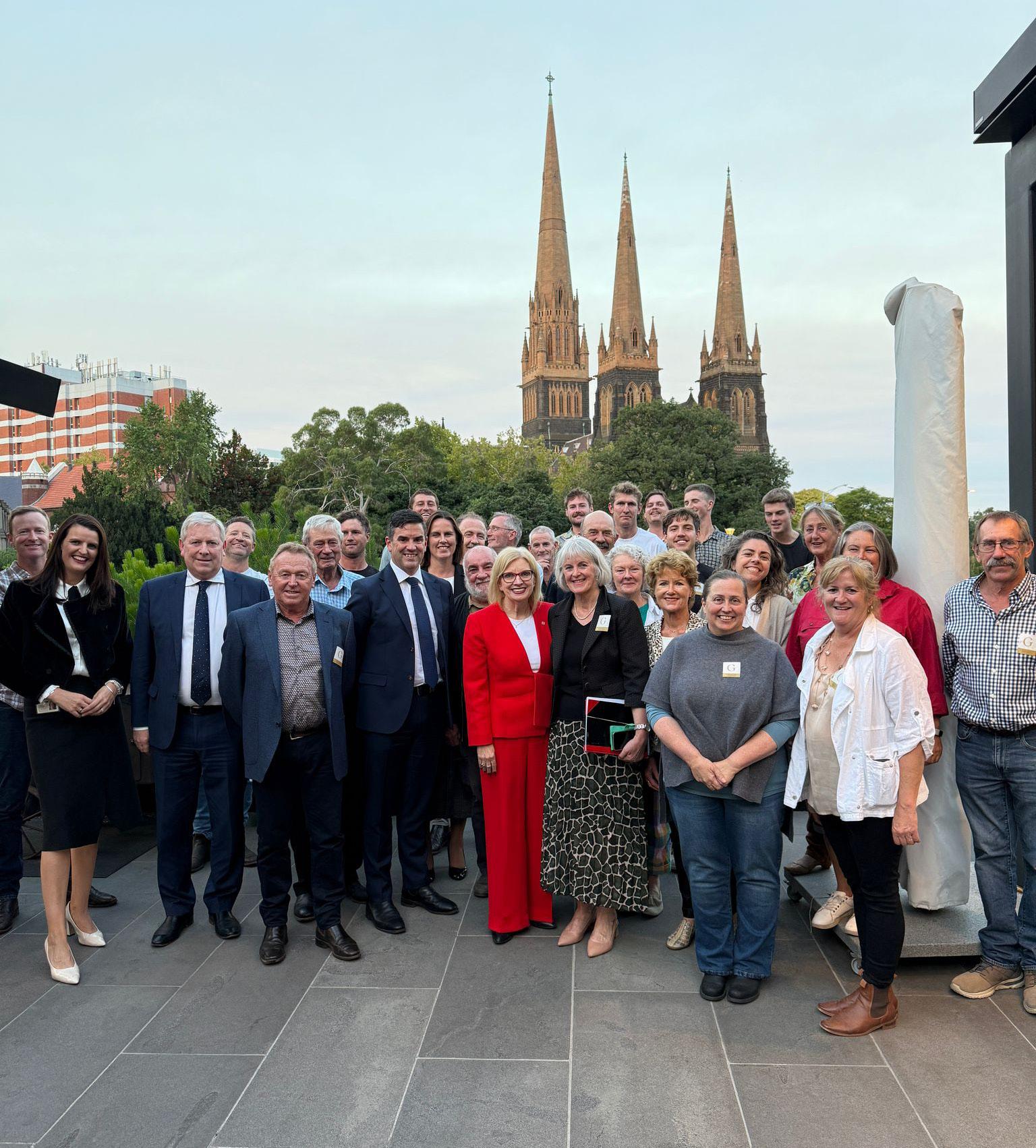
Locals Urged to Speak Out on Renewable Energy Plans Impacting Regional Victoria
VicGrid has released a draft of its first Victorian Transmission Plan, outlining proposed locations for major renewable energy infrastructure across Victoria. The plan marks a significant step in the state’s transition to renewables, but has sparked concern in several rural communities.
The Nationals’ Member for Euroa, Annabelle Cleeland, is encouraging residents to take part in the consultation process. She described the plan as a crucial opportunity for locals—particularly farmers and regional industries—to have input into decisions that could permanently alter their communities. “I strongly encourage anyone who may be impacted to have their say – it’s one of the few opportunities left to influence these decisions and ensure proper protections for farming land,” she said.
Towns including Colbinabbin, Stanhope, and Girgarre are located within a proposed Renewable Energy Zone (REZ). One of the most significant projects flagged for the region is the Cooba Solar Facility, which would see
740,000 solar panels, each eight metres tall, installed across 665 hectares—just 4.5 kilometres from Colbinabbin. The proposal has raised considerable community concern due to its scale and proximity to existing farms and residences.
Cleeland warned that planning changes introduced by the Labor Government have made it harder for rural communities to object to these developments. She said, "Labor has stripped away the ability for locals to meaningfully challenge these developments, creating serious tension and division in our towns." She added that this lack of recourse has led to growing resentment in affected areas.
“These aren’t small decisions – they permanently change landscapes, affect neighbouring farms, and disrupt the lives of people who’ve worked the land for generations,” Cleeland said, emphasising the long-term impact of such developments. She also questioned the location of many proposed projects, arguing that, "Too often, prime agricultural land is being targeted when there are more suitable sites available. Communities are being sidelined."
Although not located in official REZs, communities in Ruffy, Winton, Goorambat, Glenrowan, and the Strathbogie Ranges have
also expressed concerns about recent renewable projects, reflecting a broader unease about the rollout of renewable infrastructure without adequate local consultation.
Cleeland believes community feedback can still influence the final version of the plan. "By participating in this feedback, we can ensure this is avoided," she concluded.
Residents can make submissions in several ways:
Complete the Renewable Energy Zone study area feedback form, project status survey, or other submissions on the Engage Victoria website: engage.vic.gov.au/victransmissionplan
Email thoughts to vicgrid@deeca.vic.gov.au
Mail written submissions to VicGrid, GPO Box 527, Melbourne VIC 3001
Feedback on the draft transmission plan is open until June 24, 2025. An interactive digital map is available on the Engage Victoria project page to help residents visualise the proposed developments in their areas.
Avian Influenza Situation in Victoria –May 2025
Agriculture Victoria continues its response to the detection of H7 avian influenza (bird flu) at four poultry farms near Euroa. This outbreak involves the H7 strain, which is different from the more severe H5N1 strain affecting other parts of the world. Importantly, it is unrelated to the 2024 outbreaks in Victoria, New South Wales, and the Australian Capital Territory, which were successfully eradicated.
The department is actively working to restore Australia’s status as a “Country Freedom from HPAI in Domestic Poultry” through ongoing surveillance and monitoring. To support this, sentinel birds have been placed on two infected premises. These birds will be observed and tested for 28 days to confirm the virus has been eradicated.
On 28 April 2025, the previous Restricted and Control Area Orders were replaced by a single Control Area Order (CA) encompassing an area approximately 5 km around the four infected premises in Euroa. This change aims to reduce the impact on businesses and the community within the Strathbogie Shire while maintaining biosecurity measures essential for eradication efforts.
Restrictions remain firmly in place within this control area regarding the movement of birds, poultry products (including eggs and manure), equipment, and vehicles. Recreational game bird hunting is prohibited to prevent further spread of the virus.
Agriculture Victoria continues to update and adjust restrictions as surveillance progresses and affected properties are decontaminated. Cooperation from industry stakeholders and the community remains vital to controlling the outbreak.
Producers and the public are urged to remain vigilant and report any signs of illness in poultry consistent with avian influenza immediately. Suspected emergency animal diseases should be reported to the 24-hour EAD Hotline on 1800 675 888 or your local veterinarian.
Additional important points include:
• Vehicles transporting birds, bird products, and bird equipment are permitted to travel along the Hume Freeway through the control area, provided they do not leave the freeway or stop within the control zone.
• Truck deliveries of feed to poultry farms in the control area are exempt from permit requirements, subject to compliance with biosecurity measures such as hygiene and avoiding contact with livestock or their products.
• There are no restrictions on the movement of stock feed for other livestock species into, within, or out of the control area.
• Good biosecurity practices should always be maintained to reduce the risk of disease spread.
For recreational hunters, permits are now required to: Move game bird carcasses or parts from outside into the control area.
Move game bird hunting equipment from within the control area to outside areas.
Permits are issued for up to four weeks and can be renewed upon expiration. However, vehicles transporting game bird carcasses or hunting equipment may travel through the control area via the Hume Freeway without a permit, as long as they do not stop or leave the freeway.
For those wishing to apply for a permit or find more information, relevant contact details and application processes are available through Agriculture Victoria.
Regarding public health, avian influenza poses a low risk to humans, as infection generally requires direct and close contact with sick birds. For more information on avian influenza in humans, visit the Better Health Channel.
This update is part of ongoing efforts to keep Victoria’s poultry industry and community safe while working to eradicate the virus. Continued vigilance, cooperation, and adherence to biosecurity measures remain crucial.
Euroa and Violet Town Face Stage Two Water Restrictions Amid Ongoing Dry Spell
Euroa and Violet Town will enter Stage Two water restrictions from Wednesday 28 May 2025, as Goulburn Valley Water responds to extended dry conditions that have drastically impacted local water storage levels.
The move comes after a scorching summer and an unusually dry start to autumn—the driest in years—left storages at their lowest point since 2019. Current levels have plunged below 20 per cent, compared to 77 per cent this time last year.
Goulburn Valley Water Acting Managing Director Daniel Flanagan explained that the restrictions are necessary to manage resources efficiently while protecting long-term supply.
“We have held on as long as possible to limit the impact restrictions will have, but unfortunately we are unable to avoid this transition any longer.”
“The continued dry conditions have had a significant impact—increasing town water use and reducing stream inflows into our storages. This is during what is normally a period where storages are allowed to recover. As the area is acutely aware, we just haven’t had the autumn break we so desperately need,” Mr Flanagan said.
To maintain supply, Goulburn Valley Water will cart drinking water to Euroa and Violet Town once restrictions are in place. It will also collaborate with Strathbogie Shire Council to provide alternative water sources for public parks and sporting facilities.
Town to supplement supply when restrictions begin, and work with the Strathbogie Shire Council to supply alternative water for parks and sporting reserves. We will also continue to closely monitor storages, usage trends and rainfall forecasts, with an eye to lifting restrictions as soon as we can. However, it is important to note that we may need to escalate restrictions if the dry conditions continue.”
Euroa and Violet Town depend entirely on creeks fed by the Strathbogie Ranges, making them highly vulnerable during prolonged dry periods.
Goulburn Valley Water recently constructed an additional storage in Euroa, which became operational late last year. Unfortunately, low creek flows have so far prevented the facility from being filled.
Long-term strategies are being considered to enhance water security, including further infrastructure investments to support population growth and climate variability.
What Stage Two Water Restrictions Mean
Under Stage Two water restrictions: Lawn watering is banned at all times for residential and commercial properties.
Gardens may be watered at any time using a hand-held hose with a trigger nozzle, a bucket, or a watering can.
Watering systems are permitted only between 6–8am and 6–8pm on alternate days—properties with even or no numbers on even dates, and oddnumbered properties on odd dates. All properties may water on the 31st.
hosing windows are restricted.
Restrictions do not apply to recycled or tank water.
The broader Goulburn Valley Water service area is also experiencing strain, with many towns relying on rivers and streams now at record-low levels— down approximately 60 percentage points from last year.
As household use makes up the majority of demand, residents are encouraged to reduce consumption by taking shorter showers, fixing leaks, using full loads for washing machines, and avoiding garden watering during the hottest parts of the day.
For more details, visit www.gvwater.vic.gov.au/ restrictions or call 03 5832 4800.
“We’ll cart drinking water to Euroa and Violet
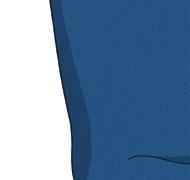








Cleaning hard surfaces, washing vehicles, and


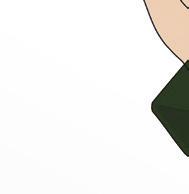
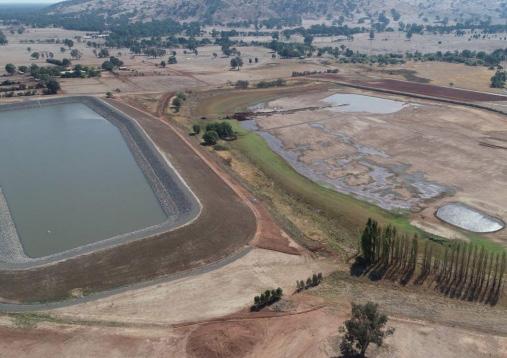
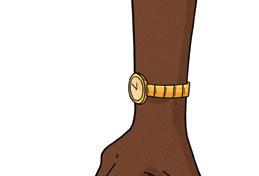
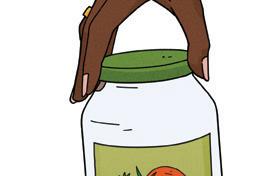








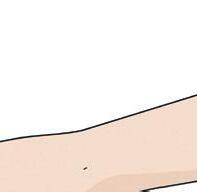




www.strathbogie.vic.gov.au/4-bins
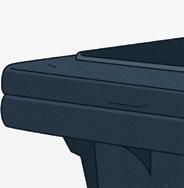


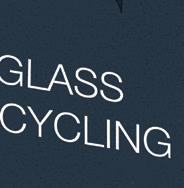










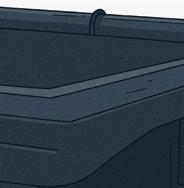





A call for the return of the dance nights
Some of you will recall as if yesterday, many of you may have vague memories, the rest of us have only heard as our grandparents reminisced about the old-time local dances. My grandparents met the loves of their lives at these events and would still, until they passed, buried side-by-side, recite what wonderful times they had in their dancing years. Many tales were mostly sentimental recollections of joyous occasions, so simply centred around dancing and playing cards.
Each time any of my grandparents would talk about these events, I felt it was such a shame that the Dances were lost before our generation, and only recently had the revelation – they don’t have to be.
Hence, the call for the return of the dance nights.
The concept was simple; You’d bring a plate for supper, enjoy live music, dance and socialise. Importantly, for better or worse, these events kept communities connected.
Fast forward to present 2025 we’re faced with terrifying statistics on loneliness, anxiety and depression. In Australia, where many people are so fortunate to have all they could want, are severely lacking a basic human need, Connection.
Social media does not count. Social media does not hold a candle to physical engagement. Much of the younger generation can speak to a video camera for their YouTube followers with the skill level of a live television presenter, yet they struggle with basic in-person interactions. Meanwhile, the most valuable assets in our communities, those who’ve more life experience than we’ll possibly ever need to have, are sitting quietly in their nursing homes, feeling inadequate and forgotten. Intergenerational relationships are, in my opinion, not only special, but essential. We each have something to teach. My four year-old teaches me almost as much as the ninety yearold’s I’m lucky to still have in my life. Equally I take interest in the lives of my local pals with identities far beyond their occupations varying
from farmers, vets, lawyers, tradies, carers, politicians, teachers, retirees, the lot. We may all seem very different, yet there is so much we have in common and we might find that, if we are just put in the same room together.
Times are tough and there is so much devastation around the world at present, it can feel overwhelming and unbearable. When I look to history for suggestions of how people got through war times and depressions, they banded together. So perhaps we could look at adopting one of the most ancient rituals, in turning to your tribe, your community for security, comfort and sense of belonging. Throw a dance night!
We’re kicking off the very first of, what we hope to be monthly Social Nights, this Saturday in Avenel. Please, consider adapting the initiative for your communities. Perhaps we could pull heads together and each town has a different week of the month as we do with the markets?
A lot of the younger generation may have not learned ballroom dances, so we’re holding free casual classes for all ages and abilities, to learn simple steps. Our local Avenel Memorial Hall is getting a little glam-up thanks to local volunteers and the very generous support of the Seymour Bunnings team. We are excitedly working on a new initiative aiming to remove financial barriers around learning musical instruments, developing self-esteem, expression and communication skills for Avenel and the wider community.
Wish us luck, and if you’re about Avenel, come along!
Join us for a fun, relaxed evening of live music, dancing, cards, boardgames, table tennis and community connection. Whether you’re 9 or 90 there’s something for everyone.
All welcome, no cover charge, donations welcome that will go towards future programs.
All-ages Social Night
Saturday 31st May 2025
5pm – 8pm
Avenel Memorial Hall
Entry: Free – donations welcome
Dress: Country-hall smart casual or wear
Sunday-best
Bring: (if you can) a plate for supper and nonalcoholic drinks
FREE DANCE CLASSES
Thursday nights at Memorial Hall
A lot of the younger generation may have not learned ballroom dances, so we’re holding casual classes for all ages and abilities, to learn simple steps.
Avenel Arts is a new initiative aiming to remove financial barriers around learning musical instruments, developing self-esteem, expression and communication skills. Our goal is to grow an accessible music and arts program for Avenel and the wider community.
We'd love your help!
Teach music or dance? Perform or host? Help with games or theatre? Volunteer at events? Got board games or ideas? Know anyone who would like to sponsor Avenel Arts programs?
Email us at avenelartsproject@gmail.com
Contributed by Samantha Lewis

Local Artists Shine in Euroa’s Fungi-Themed ARTBOX Exhibition
Residents of the Strathbogie Shire and curious visitors from beyond are warmly invited to embark on an extraordinary journey into the captivating world of fungi, as part of a unique and imaginative art exhibition opening on Saturday 17 May in the ARTBOX, located on Binney Street, Euroa.
Titled ‘Local Fungi’, the exhibition forms a key feature of the broader Festival of Fungi, a celebration that honours one of nature’s most mysterious and essential kingdoms. The show features the works of nine exceptionally talented local artists — Angus Cameron, Barbara Weimer, Ann Cremean, Peter Hill, Trina Carter, Simion Ayres, Janet Fogarty, Mary Manning, and Suzie Bates — each bringing their own creative interpretation of the fungi that inhabit the rich and biodiverse Strathbogie Ranges.
Curated by artist Ann Cremean in close collaboration with Strathbogie Ranges Conservation, the exhibition is an immersive artistic tribute to the beauty, complexity, and ecological value of fungi in the local landscape. Through paint, sculpture, photography, and mixed media, the artists have explored the intricate forms, vibrant colours, and hidden lives of these often-overlooked organisms.
Featuring a vibrant range of artworks inspired by the fungi that flourish across the region, the exhibition offers a fresh perspective on the natural world — one where scientific curiosity and creative expression intertwine. Visitors will discover how fungi, far from being mere toadstools or damp forest floor dwellers, are vital contributors to ecological balance and biodiversity.
“This is a wonderful celebration of local talent and the often-overlooked wonders of our natural environment,” said Strathbogie Shire Mayor, Cr Claire Ewart-Kennedy, encouraging people from all walks of life to engage with the exhibition and the broader festival events.
She added, “Art has the power to connect people to place — and this exhibition is a perfect example of how we can deepen our appreciation for the ecosystems that surround us.”
The ‘Local Fungi’ exhibition will run until 25 May 2025, giving audiences plenty of time to experience this sensory and intellectual exploration of the fungal world. The exhibition is proudly hosted within the ARTBOX, an innovative, mobile gallery space developed by the Strathbogie Shire Council to showcase art in accessible public locations and foster cultural engagement throughout the region.
“We’re proud to support events like this that nurture local artists, promote environmental awareness, and bring our community together,” Cr Ewart-Kennedy said.
Whether you're a nature enthusiast, an art lover, or simply someone in search of inspiration, this exhibition promises a magical, thought-provoking experience. Don’t miss the opportunity to explore the fascinating world of fungi and celebrate the boundless creativity it continues to inspire.

Mitchell Shire’s First Budget Sets a Course for Growth, Services, and Resilience
Mitchell Shire Council has adopted its 2025–2026 budget, delivering its first major policy direction since the recent election. Passed at the Council meeting on Monday 19 May, the budget prioritises essential infrastructure, service delivery, and support for the community during an increasingly difficult economic period.
This financial plan reflects a commitment to long-term sustainability while also addressing the immediate needs of a growing population. Council acknowledges the pressure being felt by residents and businesses, particularly in light of rising costs and new financial burdens such as the Emergency Services and Volunteer Levy (ESVL) introduced by the State Government.
According to Mitchell Shire Mayor John Dougall, the budget has been shaped with empathy and a deep understanding of the community’s challenges. “We understand the financial pressures faced by residents and businesses in our Shire, especially with the new levy,” he said. “This budget balances immediate needs with longterm goals, ensuring we continue to provide the services our community relies on while planning for future growth.”
Mayor Dougall also noted the broader approach taken by the new Council in its first budget cycle. “This is the first budget of the new Council, and we have approached it with empathy for the challenges our community faces. This budget reflects the commitment to tackling these challenges head-on while continuing to invest in our community’s future,” he said.
With a focus on infrastructure, livability, and planning for future growth, the budget includes significant allocations such as:
$18.53 million for the improvement and upkeep of the Shire’s road network
• $1.34 million for footpath renewal and extensions to enhance safety and accessibility
• $4.08 million towards the development of community and recreational facilities
• $16.14 million for the construction,
FOCUSED ON WHAT MATTERS MOST TO FAMILIES IN NORTHERN VICTORIA
The Allan Labor Government is delivering real support for families across Northern Victoria through the 2024–25 State Budget — with a strong focus on easing the cost of living, upgrading essential services, and investing in the future of regional communities.
Recognising the importance of opportunity for every child, the Budget includes significant upgrades to local schools, such as $13.7 million for Broadford Primary School and $11.7 million for Wangaratta High School. Smaller but impactful investments include $453,000 for upgrades at St Georges Primary School in Shepparton and $121,000 to refurbish toilets at Tallangatta Secondary College. To meet the needs of a growing population, the government is also investing $500,000 each in planning for future improvements at Lancaster Primary School, Yarrawonga College, and Broadford Secondary College.
This commitment to education reflects a broader vision. As Treasurer and Member for Northern Victoria Jaclyn Symes said, “With this Budget – my first as Treasurer – we’re focused on what matters most to Victorian families. That means real help with the cost of living and more investment in frontline services.”
Northern Victoria’s transport networks are also receiving a significant boost. A $729,000 investment will ensure the continued operation of the Yarrawonga Flexiride on-demand bus service, while $1.39 million will maintain essential regional bus connections between Robinvale and Mildura. The government is also investing $52 million to enhance regional rail services, with the Seymour Line to benefit from additional morning
upgrade, and expansion of public buildings The budget also outlines investments in landmark projects:
• Seymour Community Wellbeing Hub ($17 million), which will co-locate essential community and health services to improve accessibility.
• • Wallan East Family and Children’s Community Centre ($20.15 million), a multi-purpose hub at Wallara Waters to meet the needs of the Shire’s rapidly growing population.
• Greater Beveridge Community Centre ($3.97 million), including two new kindergarten rooms and outdoor play area upgrades.
• Seymour fenced dog-off-leash park ($233,000), transforming part of Chittick Park into a welcoming space for dogs and their owners.
• Harley Hammond Reserve upgrades ($1.167 million), delivering two modern netball courts, lighting, and a new play space.
• JJ Clancy Reserve improvements ($908,000), improving traffic flow, formalising parking, and enhancing landscaping.
• Main Road, Tallarook footpath link ($60,000), constructing a new pedestrian pathway for improved safety.
• Lancefield-Pyalong Road reseal, as part of the $5.345 million Sealed Road Renewal Program, to extend road life and improve conditions.
Additionally, $80,000 has been allocated to explore tourism and economic development opportunities in Seymour’s Goulburn River precinct, part of Council’s vision to boost local enterprise and visitor experiences.
Council has also ramped up its advocacy efforts in response to the ESVL, which has significantly increased costs for ratepayers. Council has joined the Municipal Association of Victoria and other councils in calling for reform. They argue that the levy unfairly shifts financial responsibility onto local communities and should be reviewed to ensure fairness and transparency.
These advocacy efforts have already yielded tangible results. Federal election commitments include $45 million to upgrade and seal Old Sydney Road in Beveridge, and $3.412 million from the Black Spot Program to improve safety in high-risk crash areas.
Mayor Dougall reinforced the Council’s vision for the future. “We remain focused on delivering projects that matter most to our residents, such as better roads, essential services, and vibrant recreation spaces, all while ensuring we maintain financial sustainability for the long term.”
The budget aligns closely with the Council Plan, which is currently being finalised. This ensures that investments are focused on priorities the community has helped shape.
For further details, visit the budget page on Mitchell Shire Council’s website, collect a hard copy at Council’s Customer and Library Service Centres, or call 5734 6200.
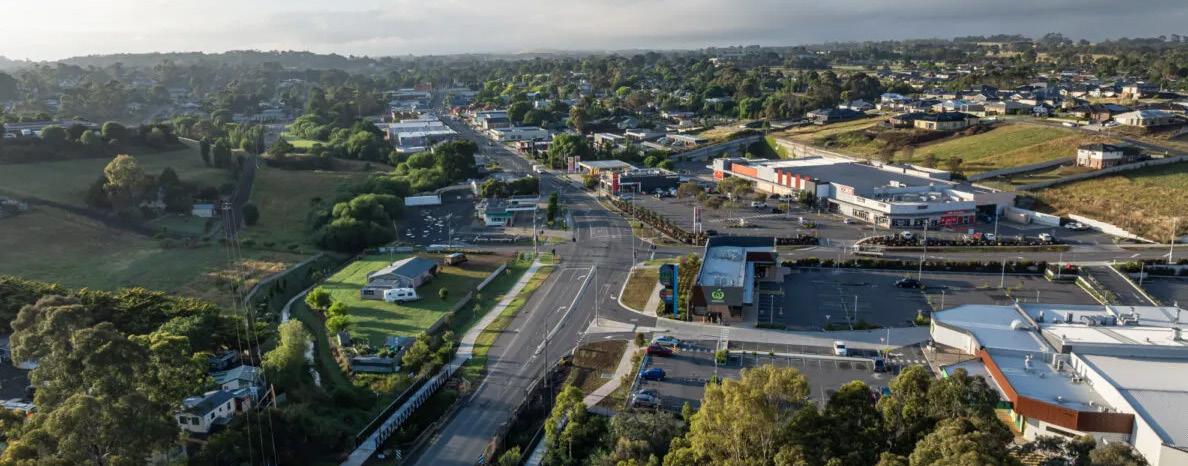
and afternoon peak services. For commuters from Kilmore to Seymour, this will mean trains to and from the CBD every 20 minutes during peak hours — a major improvement in travel convenience.
To ease the burden of transport costs, the Budget introduces free public transport for all Victorians under 18 from 1 January 2026 — delivering potential savings of up to $755 per child, per year.
“Free public transport for under 18s will be big for families in Northern Victoria – giving families one less thing to worry about,” said Ms Symes. In addition, free weekend public transport will be available for all Victorians aged 60 and over with a Seniors Card, helping older residents visit family or enjoy travel across the state without added costs.
Other targeted investments support the foundations of community wellbeing. The CFA satellite station in Leitchville will be upgraded to ensure local volunteer firefighters have the facilities they need to keep the community safe. The Budget also secures continued funding for Free Kinder, which is saving families up to $2,600 per child annually. Over 150,000 families are already benefiting from the program, and the government is reinforcing this support with an additional $2 billion investment.
Local sporting clubs and community infrastructure are also set to benefit. The Mount Beauty United Cricket Club will receive up to $175,000 for new practice nets, while $150,000 will go towards resurfacing the netball courts at the Benalla Saints Football Netball Club. Up to $250,000 is also allocated for a new pump track in Yackandandah, enhancing recreational opportunities in Victoria’s High Country.
Recognising the importance of agriculture and regional leadership, the Budget provides $250,000 to continue the Rural Women’s Leadership and
GMW Appoints Inaugural Members to Strengthen Customer Engagement
Goulburn-Murray Water (GMW) has officially announced the first members of its newly established Customer Committees, marking a major step forward in enhancing community representation and customer collaboration.
The Customer Committees are designed to provide valuable feedback and insight on the strategic challenges faced by customers and communities, as well as the services delivered by GMW. In total, six committees have been formed, including three for the Goulburn Murray Irrigation District (GMID), alongside committees for diversions, pumped districts, and water districts.
An additional Loch Garry Customer Committee is set to be established in the second half of 2025, following the completion of the Loch Garry Future Services Strategy.
GMW Managing Director Charmaine Quick acknowledged the strong interest in the initiative, stating, “We greatly appreciate everyone who expressed an interest in joining one of the committees,” and added, “The quality of the applications was very high.”
These new committees replace the former Water Service Committees. GMW consulted with those committees during the transition, including discussions on the new structure and member selection process. Due to a high number of applicants, elections were conducted for both the Central and West GMID Customer Committees, covering the Central Goulburn, Loddon Valley, and Torrumbarry regions.
For the Diversions, Pumped Districts, and Water Districts committees, applicants were assessed by a panel using a selection matrix, which ensured a well-balanced mix of skills and experience. Final appointments for all committees were confirmed by the GMW Board in late April.
GMW Chair Diane James AM congratulated those selected, saying, “Customer Committee members will provide a valuable link between GMW and its customers.” She continued, “We appreciate the skills and insights the new members bring and look forward to working with them to help our region thrive.”
To support the new committee members, GMW will host an induction day and annual summit in late June.
Customer Committee Appointments:
GMID Customer Committee – East
Mentoring Program and $9.2 million to manage pest animals, alongside the continuation of the Fox Bounty initiative — all aimed at protecting prime agricultural land and supporting future rural leaders.
In response to rising cost-of-living pressures, the government is also strengthening regional food relief. A total of $18 million will support food charities, including $6 million for foodshares in Albury-Wodonga, Geelong, Bendigo, Shepparton, Mildura and Warrnambool.
Foodbank will deliver about 480,000 kilograms of food to regional hubs, with an additional $3 million invested in its GROW program, ensuring surplus produce reaches those in need instead of going to waste.
To help reduce energy costs for families, more rebates will be available for energy-efficient heat pumps and solar hot water systems, saving households up to $400 annually. A $100 Power Saving Bonus will also be offered to eligible households with a concession card, providing timely relief ahead of winter bills in August.
Access to healthcare will also improve through an $18 million expansion of the Community Pharmacy Pilot, which will be rolled out permanently and on a larger scale. Pharmacies will be enabled to treat more conditions — including allergies, nausea, high blood pressure and minor wound care — without the need for a GP prescription. The cost of the consultations will be fully covered, ensuring free and accessible care for more Victorians.
This Budget represents a comprehensive investment in the things that matter most — supporting families, strengthening communities, and building a fairer, more resilient Northern Victoria.
Michael van Eyk, Jane Waser, Craig Reynolds, Paul Lindsay, Peter Radevski, Nick Raleigh, Adam Routley, Matthew Cornish
(Vacant position remaining)
GMID Customer Committee – Central
Gordon Watson, Peter Gibson, Ben Nexhip, Glenn Murrells, Dallas Aikman, Andrew Rushton, Peter Hacon, Corey Mitchell, Graeme Donaldson
GMID Customer Committee – West
Todd Martin, Andrew Leahy, Douglas Perryman, Hamish Toll, Tony Sawers, Calum Peace, Matthew Chalmers, Gregory Quinn, Dianne Bowles
Diversions Customer Committee
Stuart Crosthwaite, David Lawrence, Neil Renshaw, Angus Parry, Peter Serpell, Evan Ryan, David Elford, Prue Milgate, Jason Reid, Peter Antonello, Simon Rouget, Richard Carter, Catherine Birchall
Pumped Irrigation Customer Committee
Jarrod Tonkin, Kevin Grivell, Peta Thornton, Michael Boulton, Colin Free, Mick Tempini, Sean Croft, Nathan Free
(Vacant position remaining)
Water Districts Customer Committee
Peter Jeffrey, Roger Nolan, Garry Addlem, Neil Allen, Jim Chalmers
(Vacant position remaining)
Background: Further details, including the Terms of Reference, are available on GMW’s website: www.gmwater.com.au/customer-committees
More hours, more learning, more play



Children in Strathbogie Shire can now have more time to learn through play, with 16-20 hours of free Pre-Prep every week.
Learn more at vic.gov.au/pre-prep

Mitchelton Excursion
StPrimaryJoseph's Nagambie Primary Nagambie
As part of our “Ngurra: Telling Stories through Art” community project this term, our students had the privilege of visiting one of the largest collections of First Nations artwork at Mitchelton. Guided by curator Sam, the children explored the gallery, learning about the deep cultural meanings behind each piece.
Sam explained the symbols, colours, and patterns used by First Nations artists to tell stories about land, family, and heritage. The students were captivated by how art can preserve culture and pass down important messages through generations.
After the gallery visit, the children spent some time in nature next to the Goulburn River. Surrounded by the beauty of the landscape, they were inspired to create their own artworks, reflecting on their personal stories and connection to the natural world.
This excursion beautifully tied into our classroom learning, where we’ve been exploring how stories
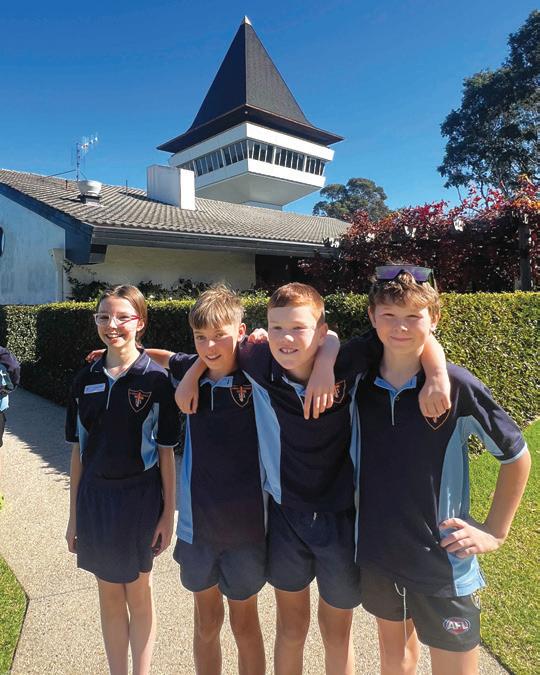
can be told through visual expression. The gallery visit and time spent in nature, sparked creativity and reflection, giving students a deeper understanding of how art can be a powerful form of storytelling.
My favourite part was seeing the truck & the dog statues with paintings on them – Ryan, Grade 1
I liked when we saw the truck with all the painted hands on it & the big tower – Eddie, Grade 1
My favourite part was the car because it reminded me of Aboriginal people – Mila, Grade F
I really liked the painted doggies – Caoimhe, Grade F
I loved going to the top of the tower! – Ivy, Grade 6
It was really fun because there was so much creative artwork especially the message stick vehicle. It gave me so many ideas for when I was doing my own drawing - Lewis, Grade 6
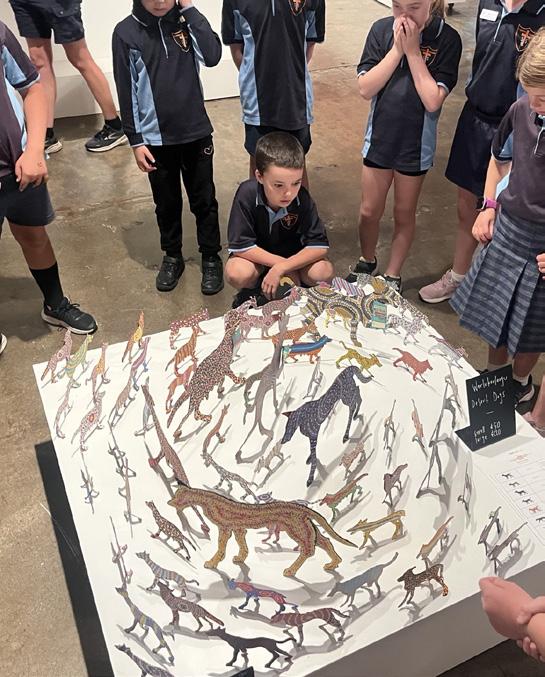
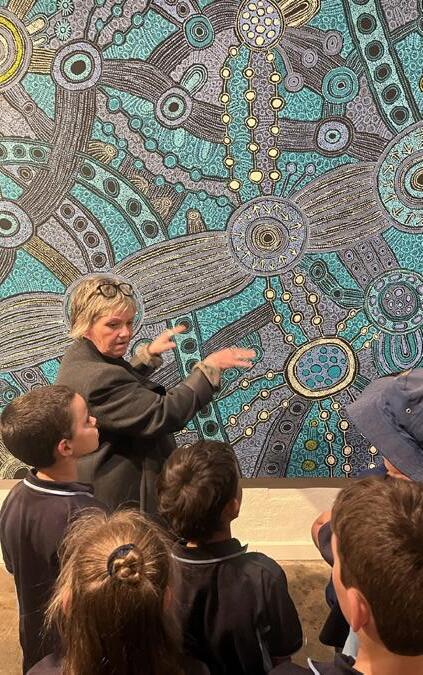
Division cross country
We were very proud of our school team who represented us at the recent Ranges Division cross country event at Yea. These fourteen students had earned their place in the team through their great efforts at House & Euroa District cross country. Well done to Harper Stewart, Emily Luff, Emmerson Matthews, Charlie Muir, Kyla Sinnbeck, Lani Perry, Henry Boyle, Mason
At Division you compete against students
after their
performances at Division cross country.
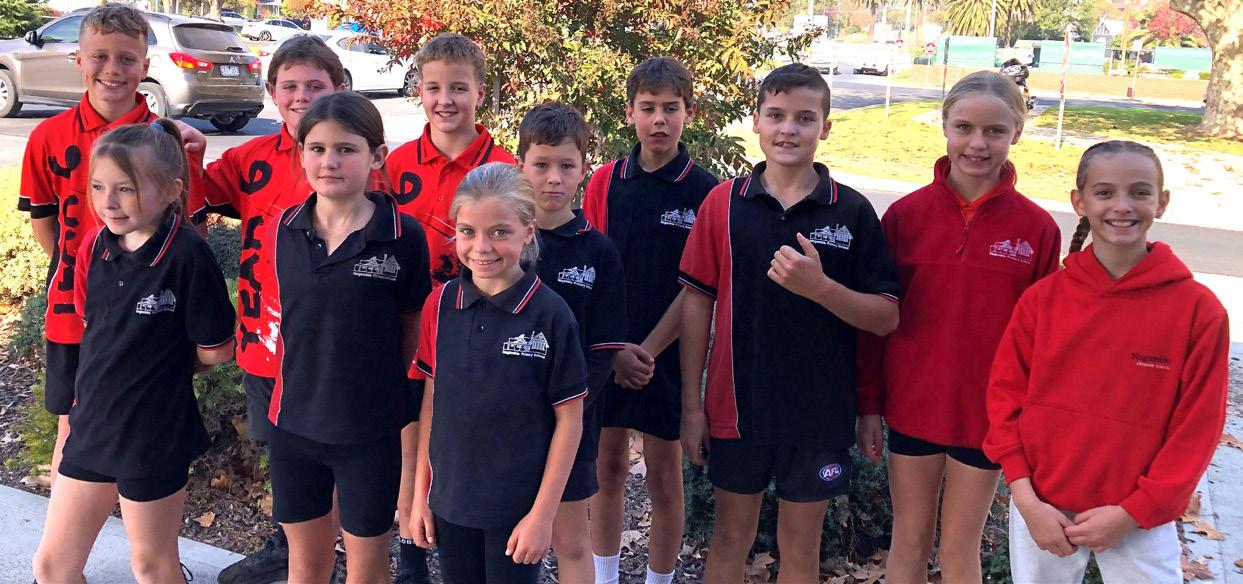
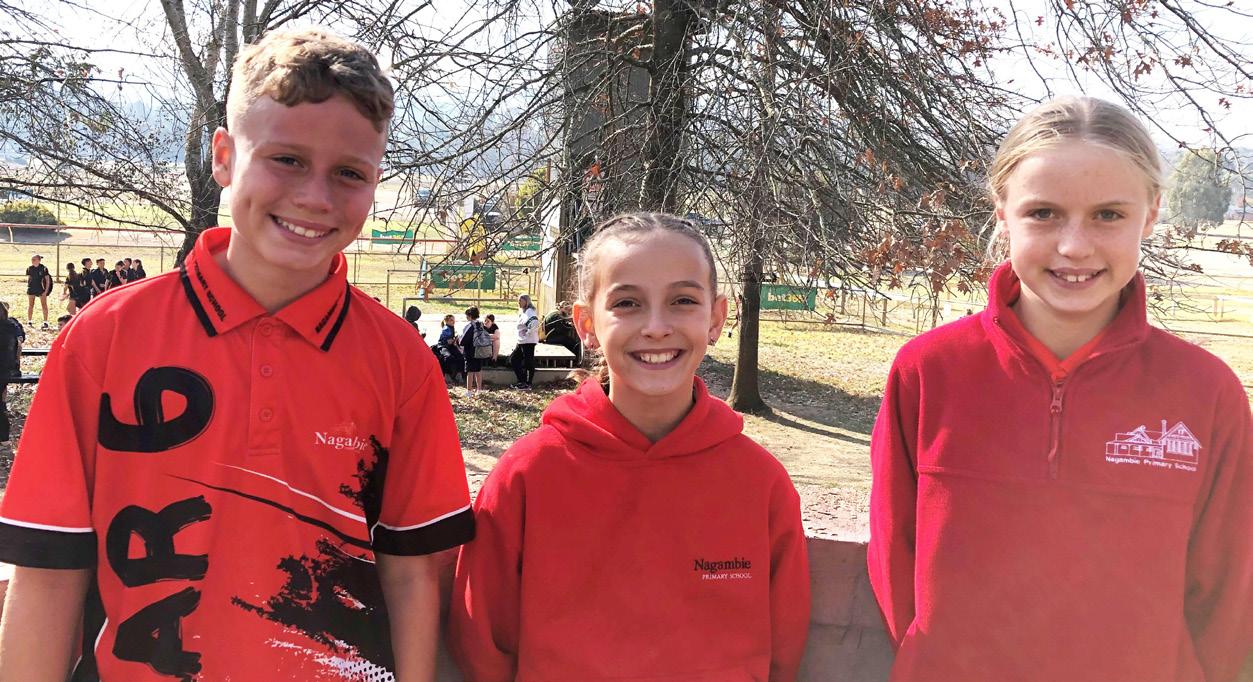
PRIMARY SCHOOL
Loft, Sarah Luff, Emily Bodle, Darby Blackwell, Hudson Smith, Eli Andrea, Harry Hesse.
from 40 other schools on a hilly cross-country course at the Yea Golf Club. Congratulations to Sarah Luff, Harry Hesse and Harper Stewart who have qualified for the Hume Region cross country championships
great
Congratulations to our Division cross country team.
Harry, Harper & Sarah qualified for Regionals with their great runs at Division cross country.

















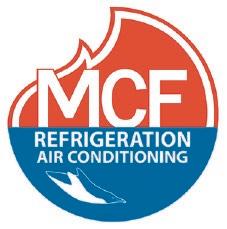













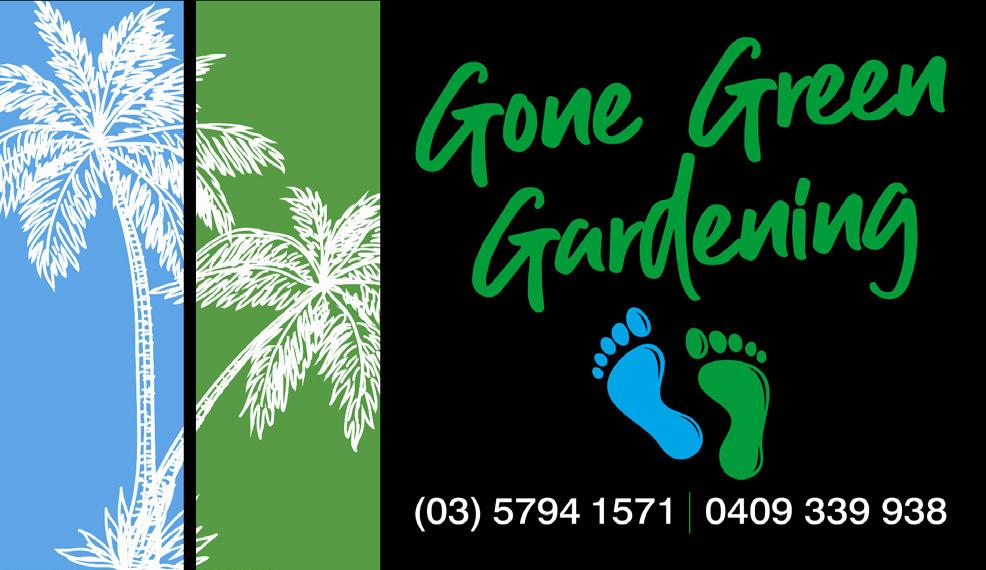














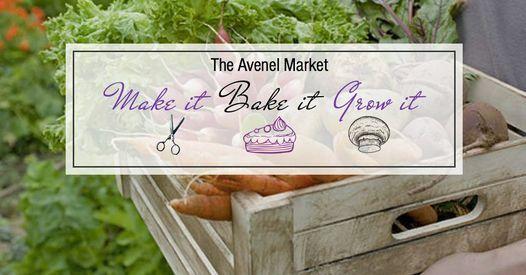
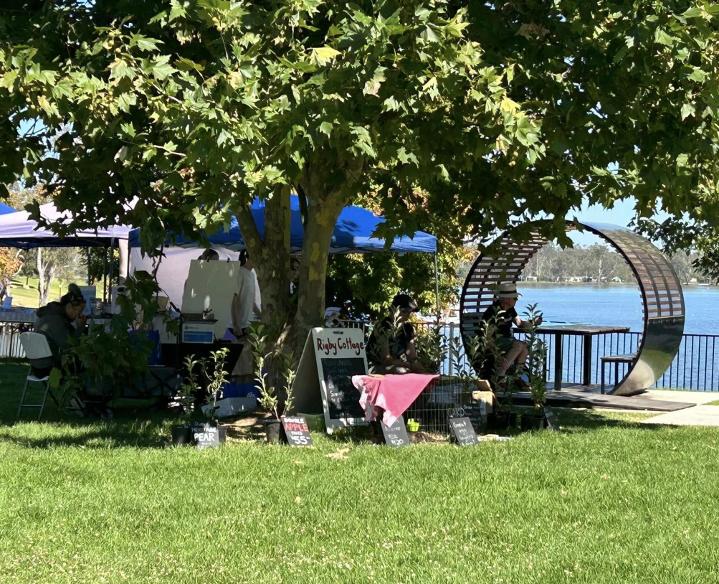
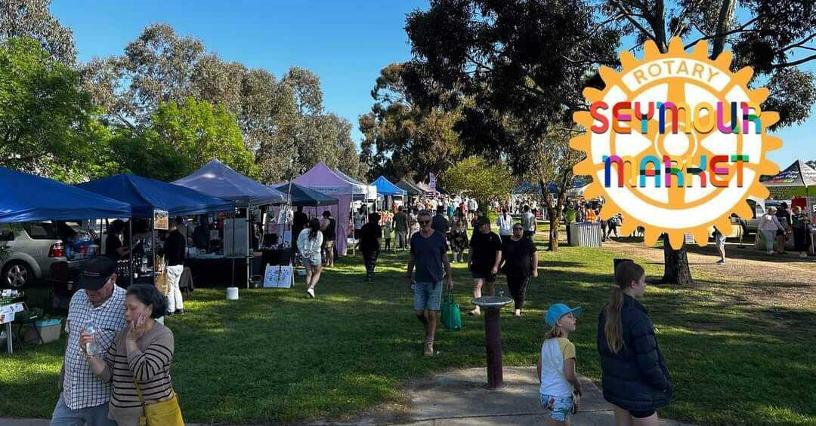
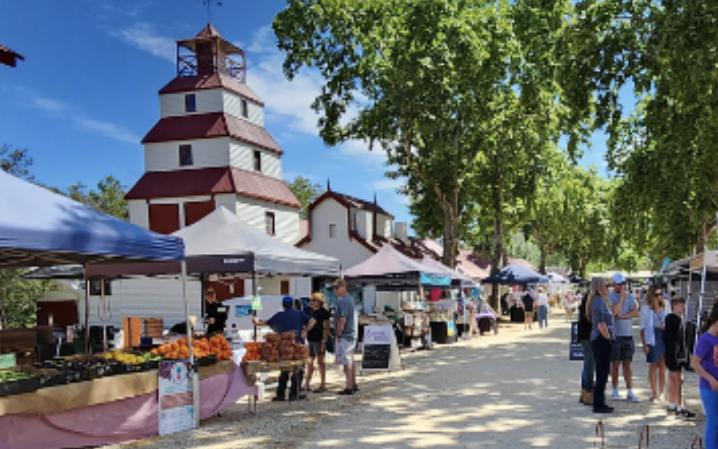
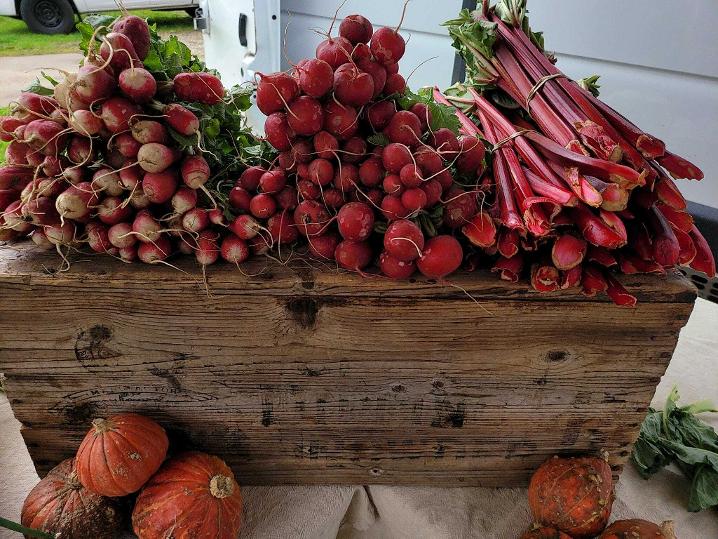
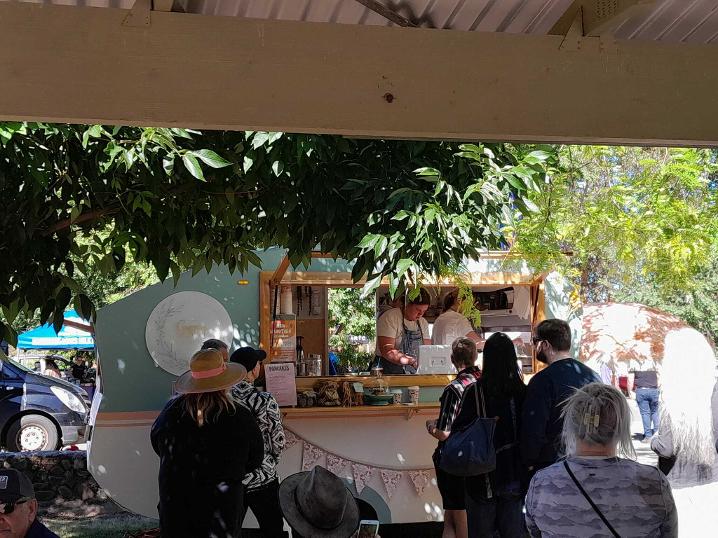
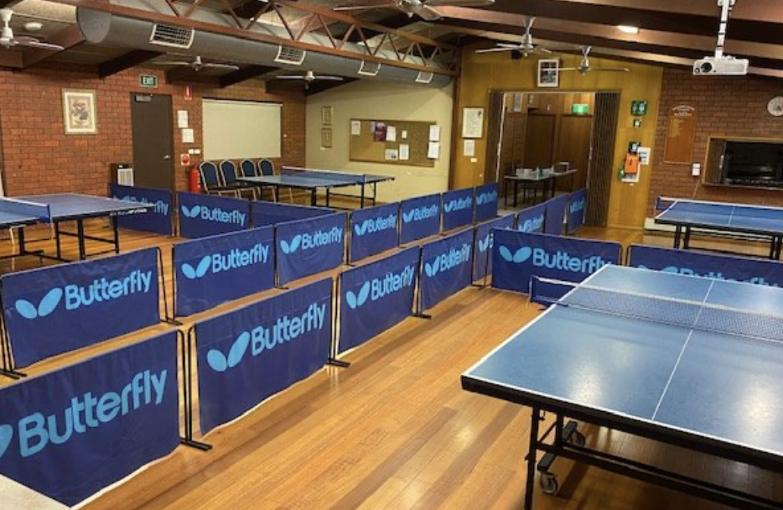
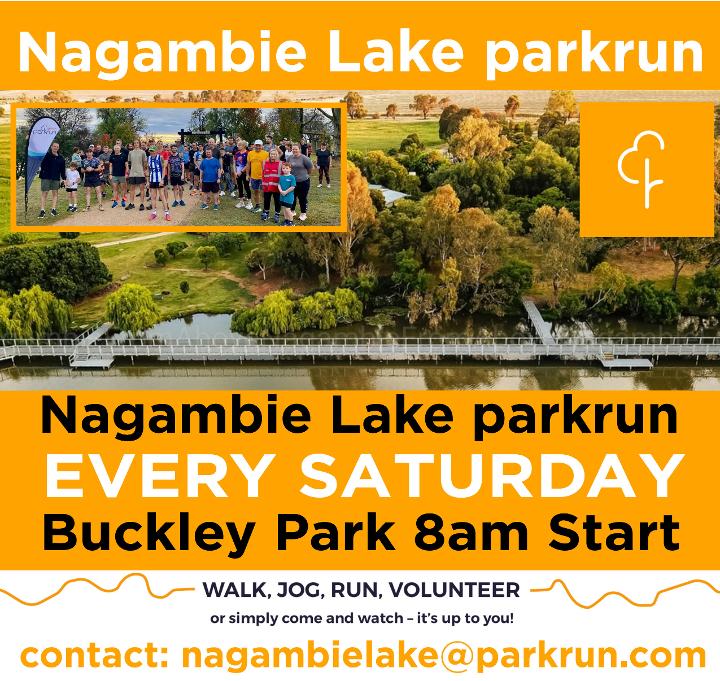

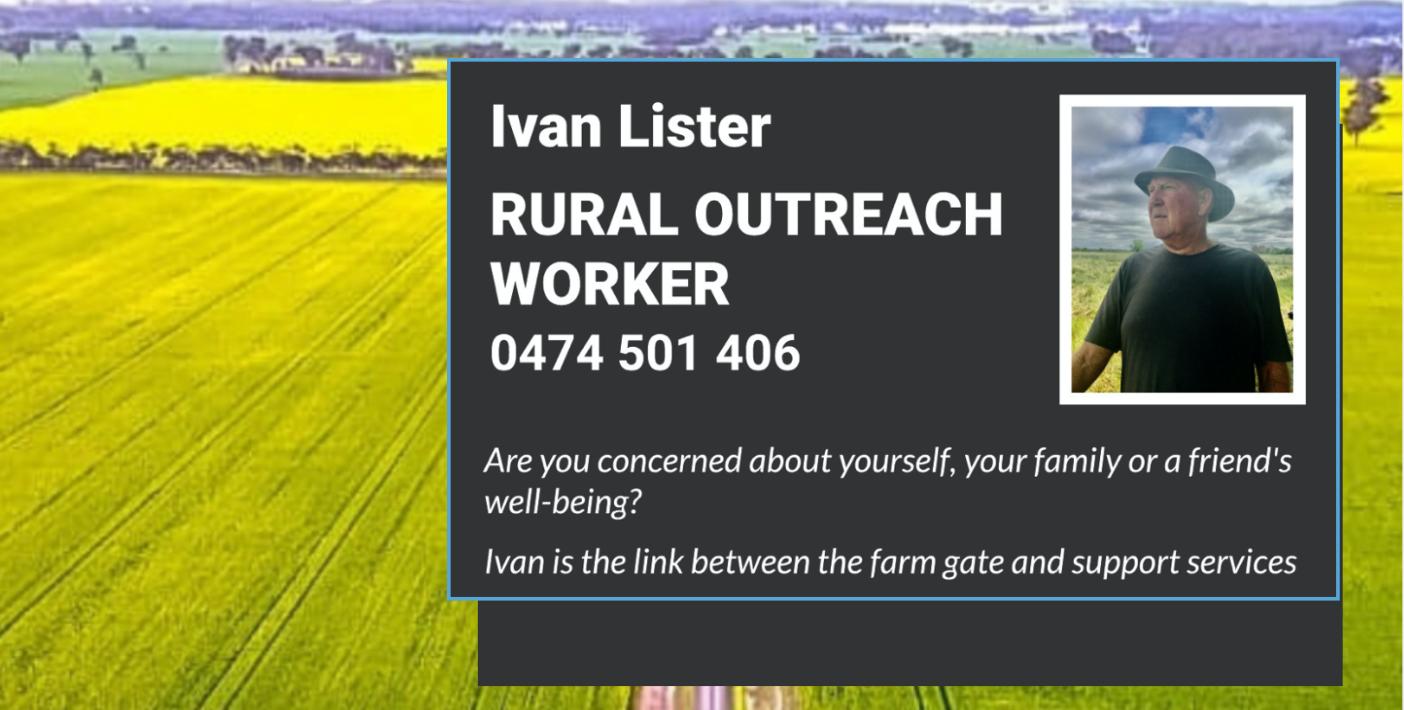
Nagambie Golf News
RESULTS WEDNESDAY 14TH MAY
We had 7 players. The winner of all Grades, The Monthly Medal ,the Seymour Club Voucher and the 9 hole Competition was Irene Keogh. Irene won with 36pts. N/P on the 8th was Sue Verge.
Balls down the line for 18 holes went to Irene with 36pts. Balls for 9 holes went to Irene with 19pts and Karyn Thompson on a C/B from Kylie Carmichael and Monica Hurley all with 17pts.
RESULTS WEDNESDAY 21ST MAY
There were 10 players with 3 only playing 9 holes. The winner of all Grades was Monica Hurley with 32pts. The 9 hole winner was also Monica with 18pts.
Monica also managed N/P on the 3rd and was the winner of The Seymour Club Voucher.
Balls down the line for 18 holes went to Monica 32pts , Karyn Thompson with 31pts and Annette Mills with 29pts.
Balls down the line for 9 holes went to Monica 18pts, Jane Bow
It
Nagambie Masters Ready to Take On Nationals
Sydney International Regatta Centre, 29 May – 1 June 2025
The stage is set for the Australian Masters Rowing Championships, a premier event that unites experienced rowers from across the country in a four-day celebration of athleticism, teamwork, and competitive spirit.
This year, the Nagambie Rowing Club will proudly be represented by a formidable crew of seasoned athletes: Wendy Cotter, Alastair Isherwood, Dave Andrews, John Strapps, and Leigh McIntyre. These local legends will take to the water at the iconic Sydney International Regatta Centre, battling it out against the nation’s best in one of the sport’s most scenic and challenging venues.
We extend our warmest congratulations and best wishes to the team as they chase glory on the national stage.

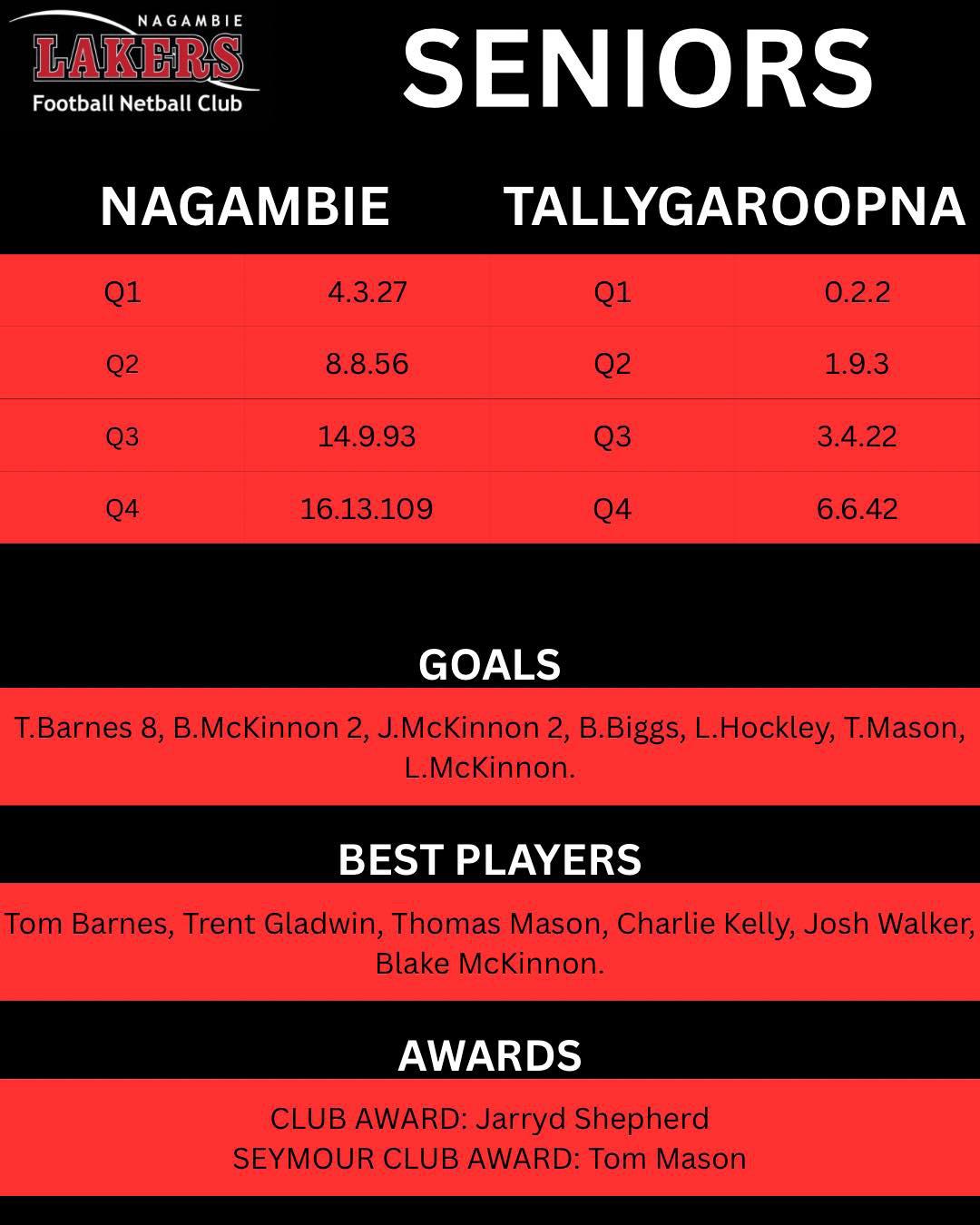
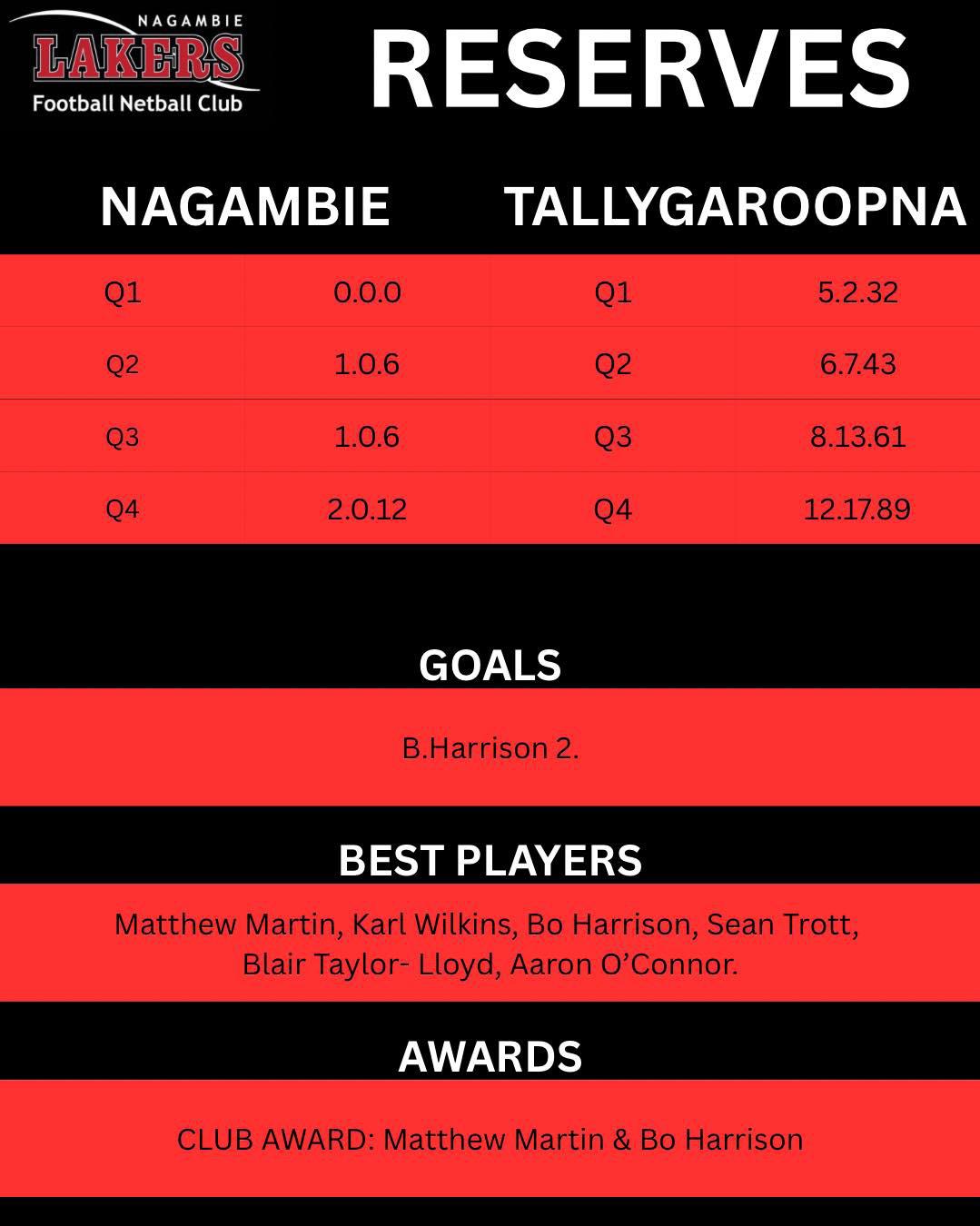

17pts and Kylie Carmichael with 16pts on a C/B from Deb Ringin and Irene Keogh.
was also the 2nd round of the Captains Aggregate Trophy and the winner was Sue Consiglio.
